It has been two long years since the Philippine government declared the liberation of Marawi City, but the Maranao people still suffer from the aftermath of the conflict to this day. Promises are yet to come to fruition despite billions of pesos worth of aid that have poured in from within and beyond the country since 2017. Residents are left to wonder when they will be able to rebuild the place they once called home. More than the scars and wounds that they have endured, the Maranao take pride in their narratives of strength. The GUIDON explores these stories of faith, family, leadership, and hope—the core foundations of the community—that persist as life mends, and more importantly, moves forward.
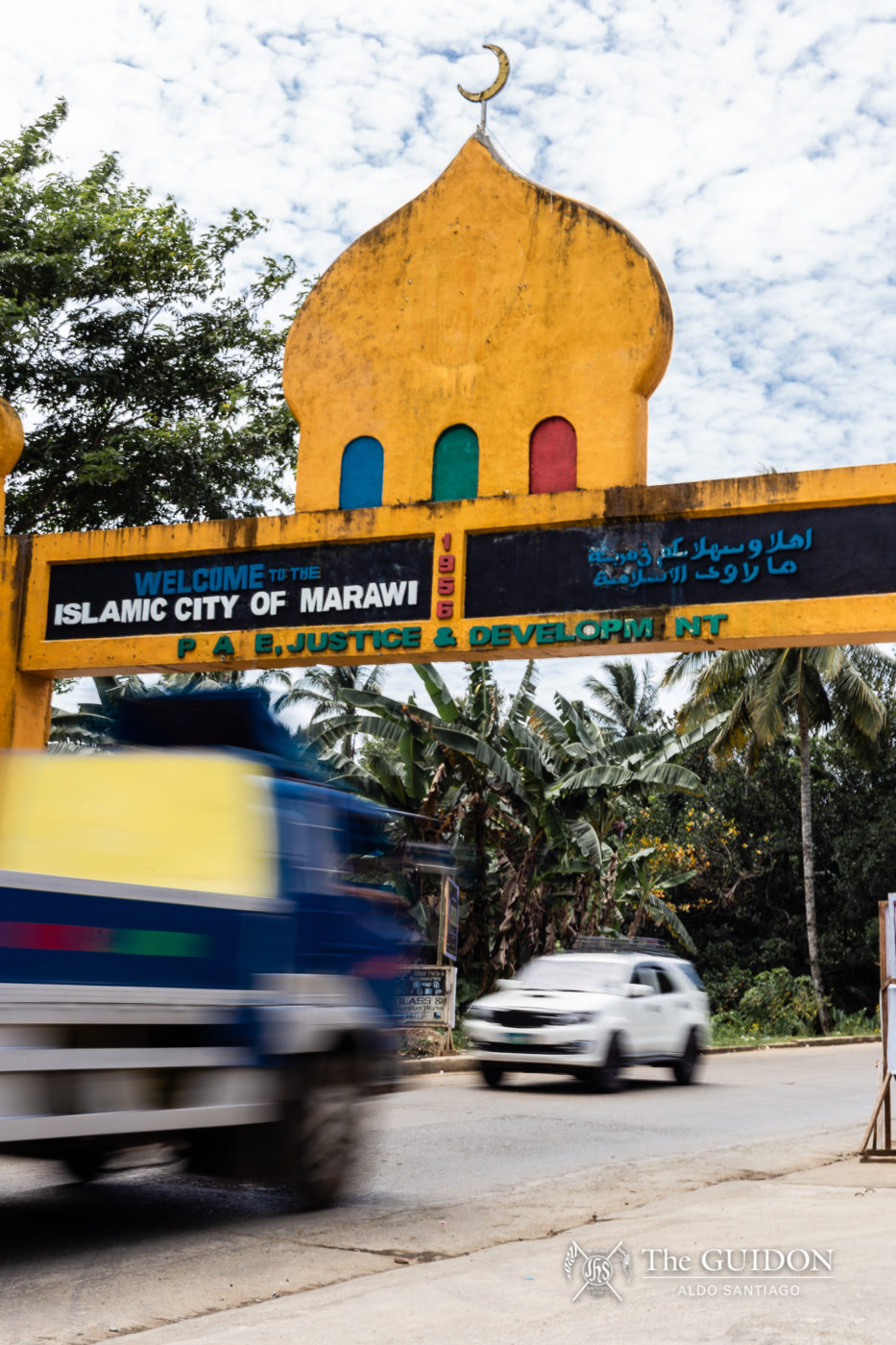
The Marawi City welcome arch marks the entrance to the only Islamic city in the Philippines. Marawi stands as the capital of Lanao del Sur in the Bangsamoro Autonomous Region of the Philippines. The city was once considered to be one of the most highly urbanized metropolitan areas in the Mindanao region.
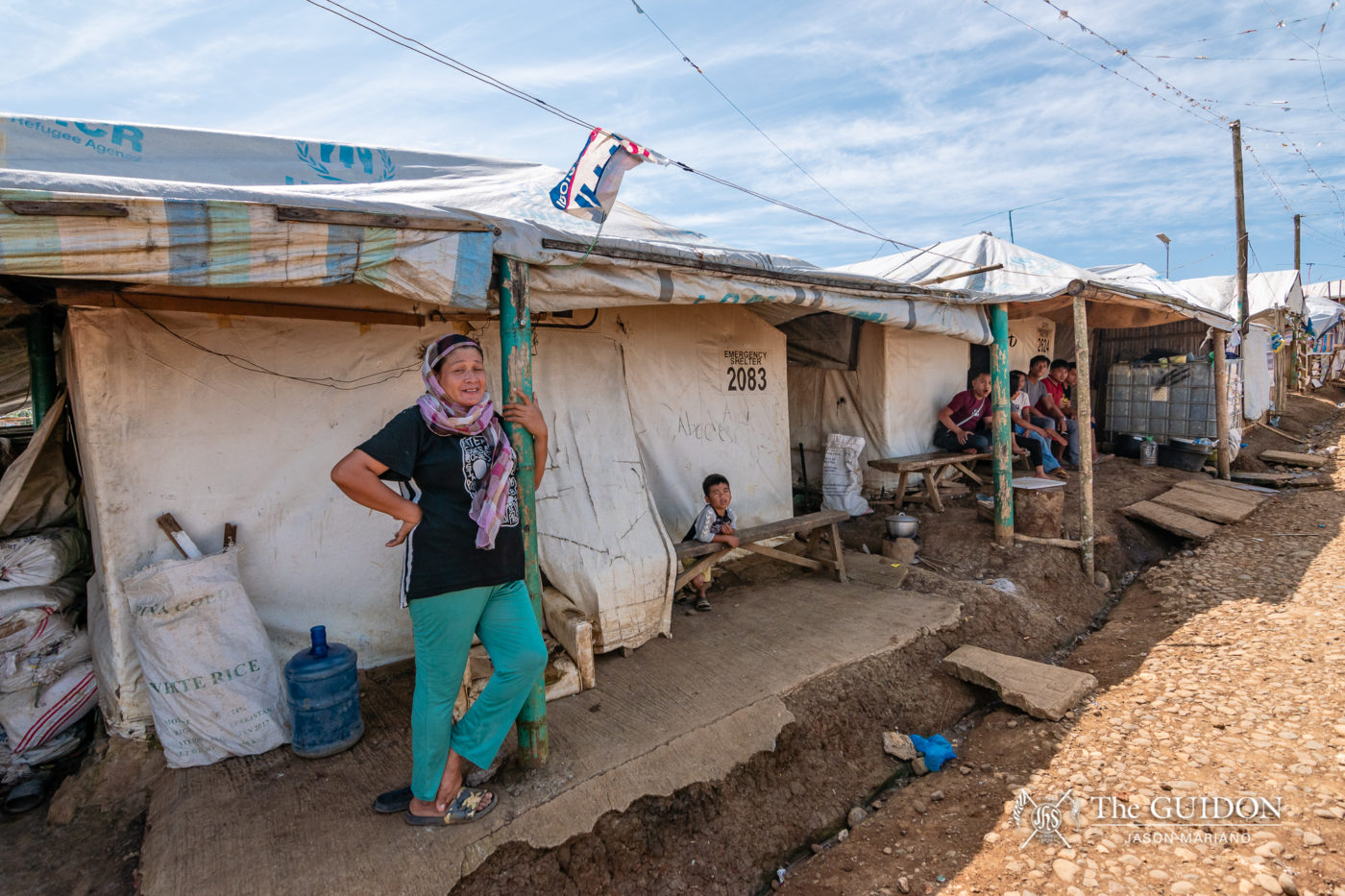
Jasliah Abbas has stood as the camp leader for the Sarimanok Tent City Site 2 refugees. She has served as the voice for many of the displaced Maranaos residing in the community. As camp leader, Abbas regularly facilitates most of the community functions and manages oncoming relief operations from government and non-government organizations (NGOs).
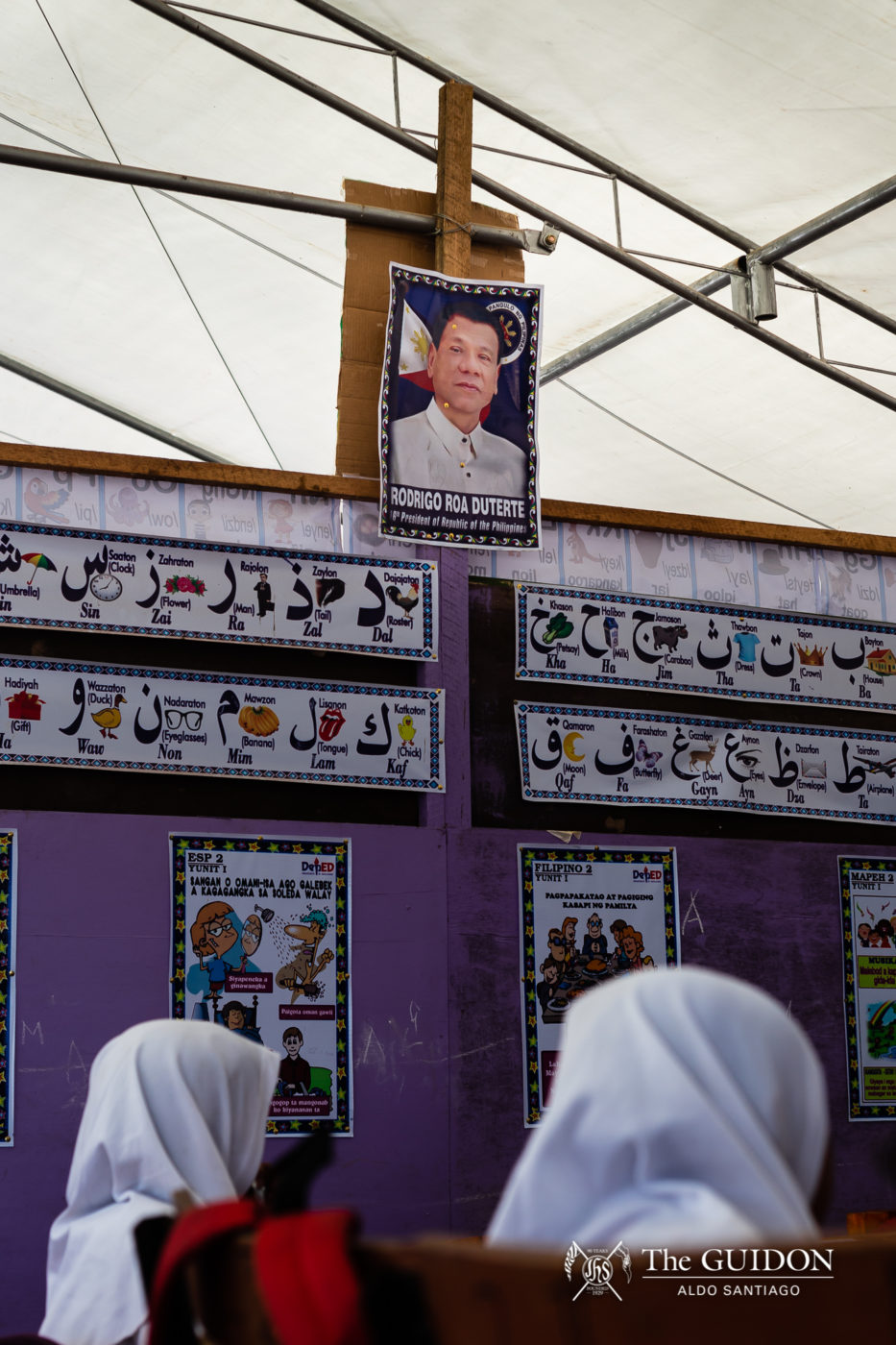
Amidst a typical classroom setting, a portrait photo of President Rodrigo Duterte is positioned high above the walls of the makeshift classrooms. His photo overlooks an entire class of young children who are currently enrolled in the Marawi Sarimanok Elementary Pilot School.
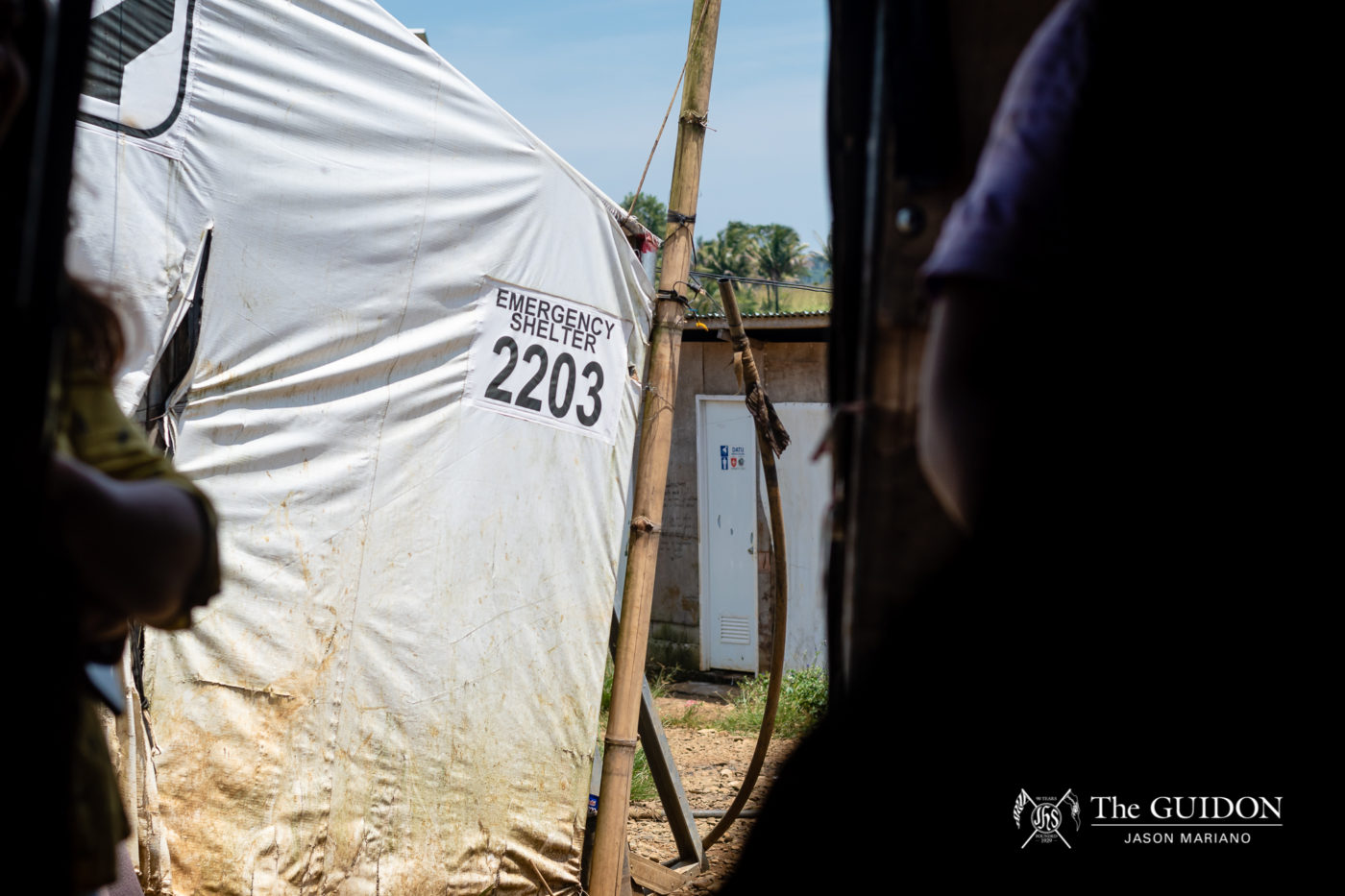
Internally Displaced People (IDPs) have been forced to adapt to inadequate living conditions as a result of the siege. For instance, residents have endured leaking roofs during heavy rains. The tents are also left to the will of the elements, often shaking and wobbling in the wind, leaving the people struggling to catch a good night’s sleep.
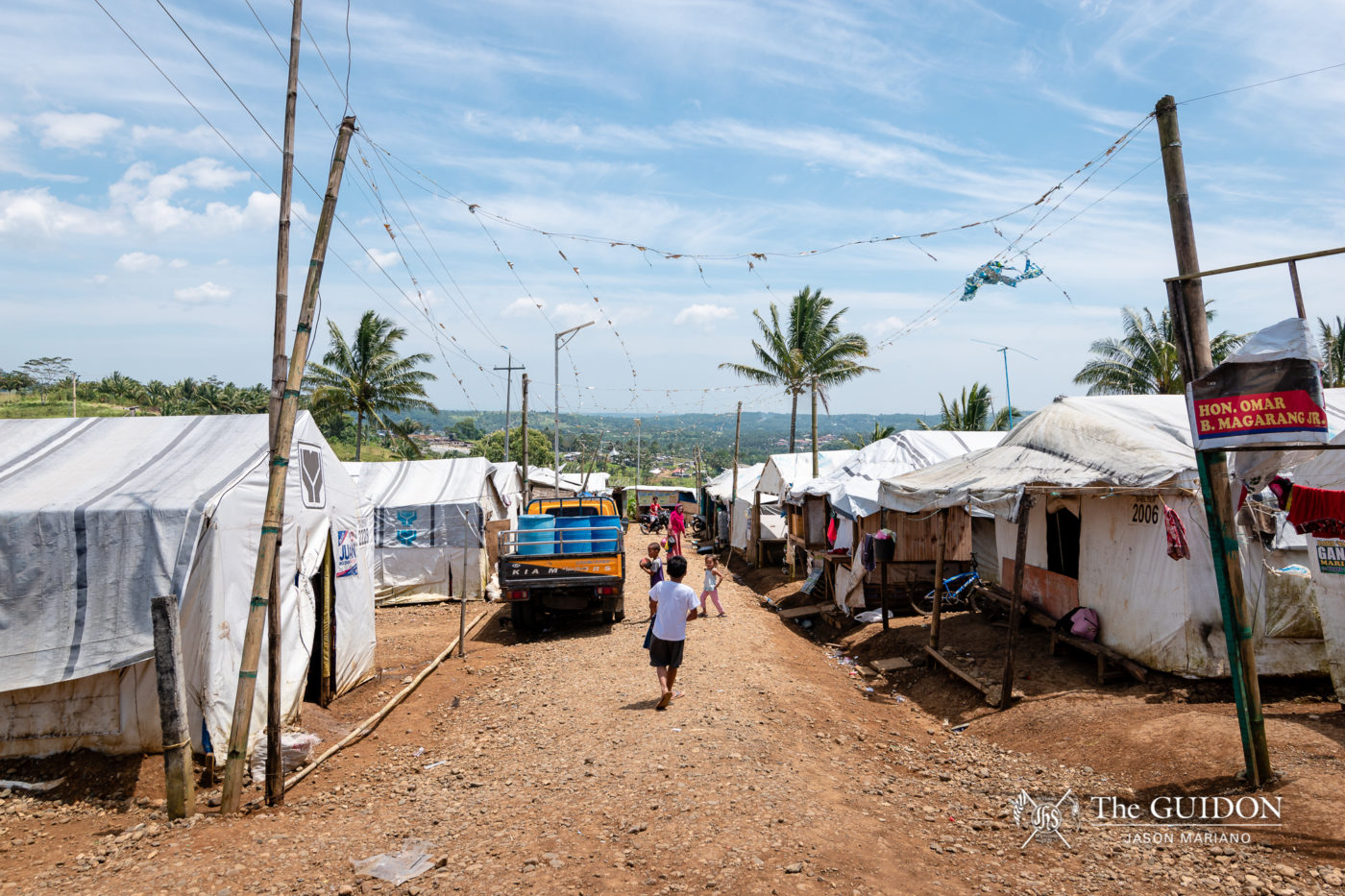
Sarimanok Tent City Site 2 has served as the shelter of hundreds of IDPs for the past two years. Many of the residents have expressed their concerns about their substandard living conditions, as evidenced by irregular water supply, low-quality tents, and inconsistent relief goods. As of writing, The GUIDON has received information that the residents of the site have been relocated to concrete shelters in a nearby area.
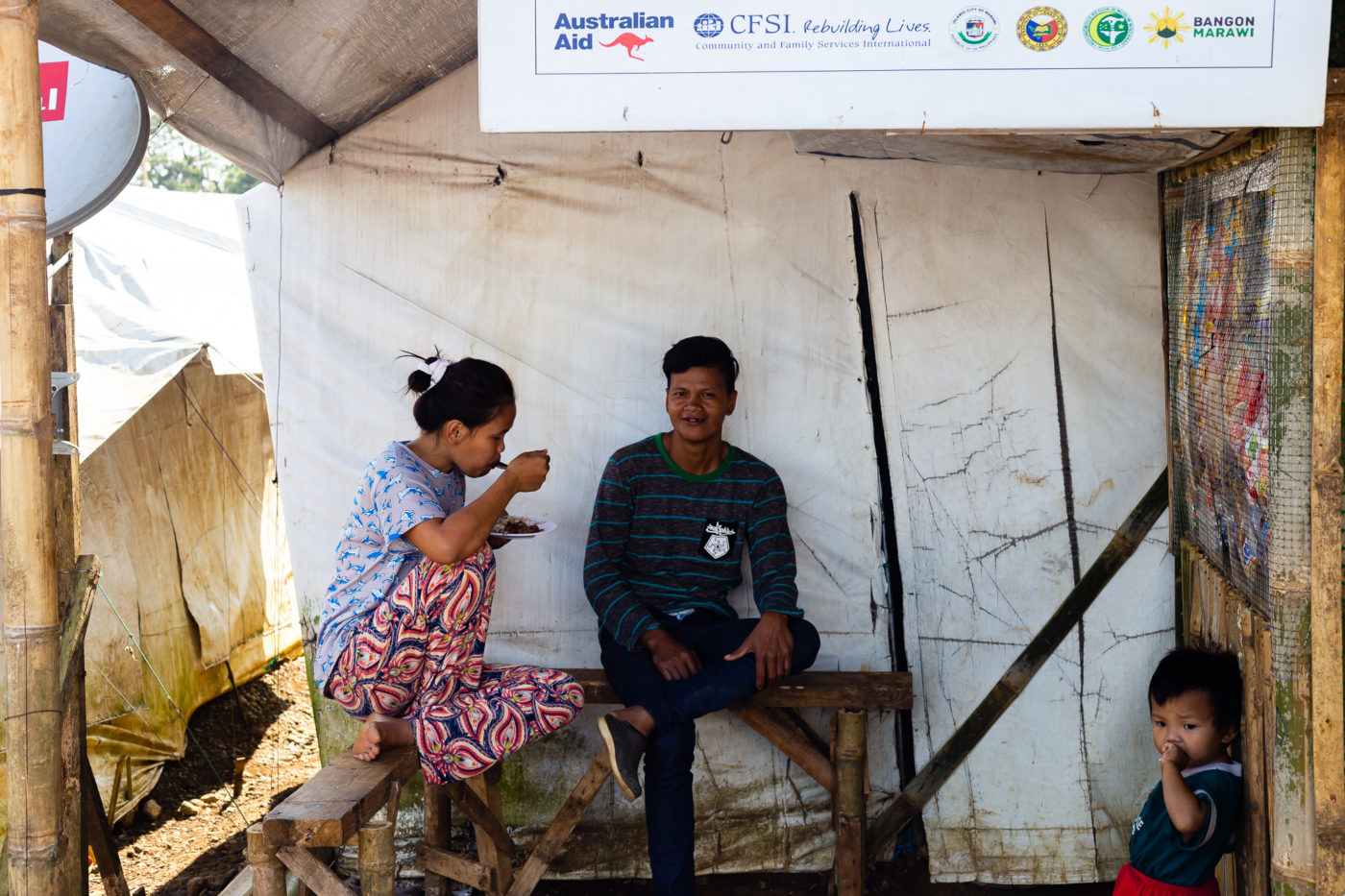
A family of IDPs shares their frustrations about the national government’s prolonged three-year imposition of Martial Law in Mindanao. The group also shared their grievances with elected leaders who gave them false hopes for a quick rehabilitation and resettlement process.
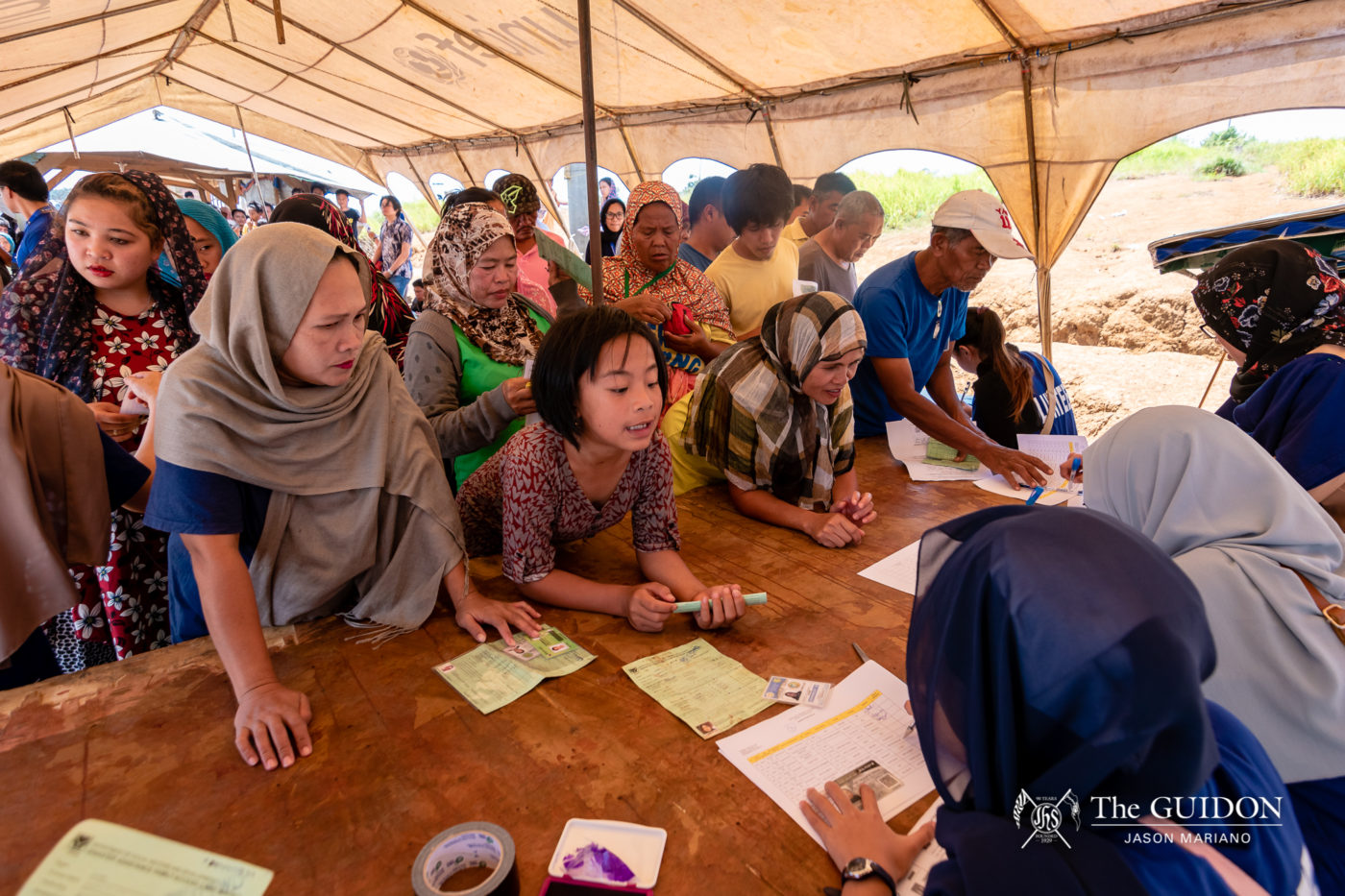
As part of the three-day long Eid al-Adha celebration, residents line up for food package donations from Islamic Relief Philippines, an NGO dedicated to aiding underserved communities as guided by their Muslim faith and values.
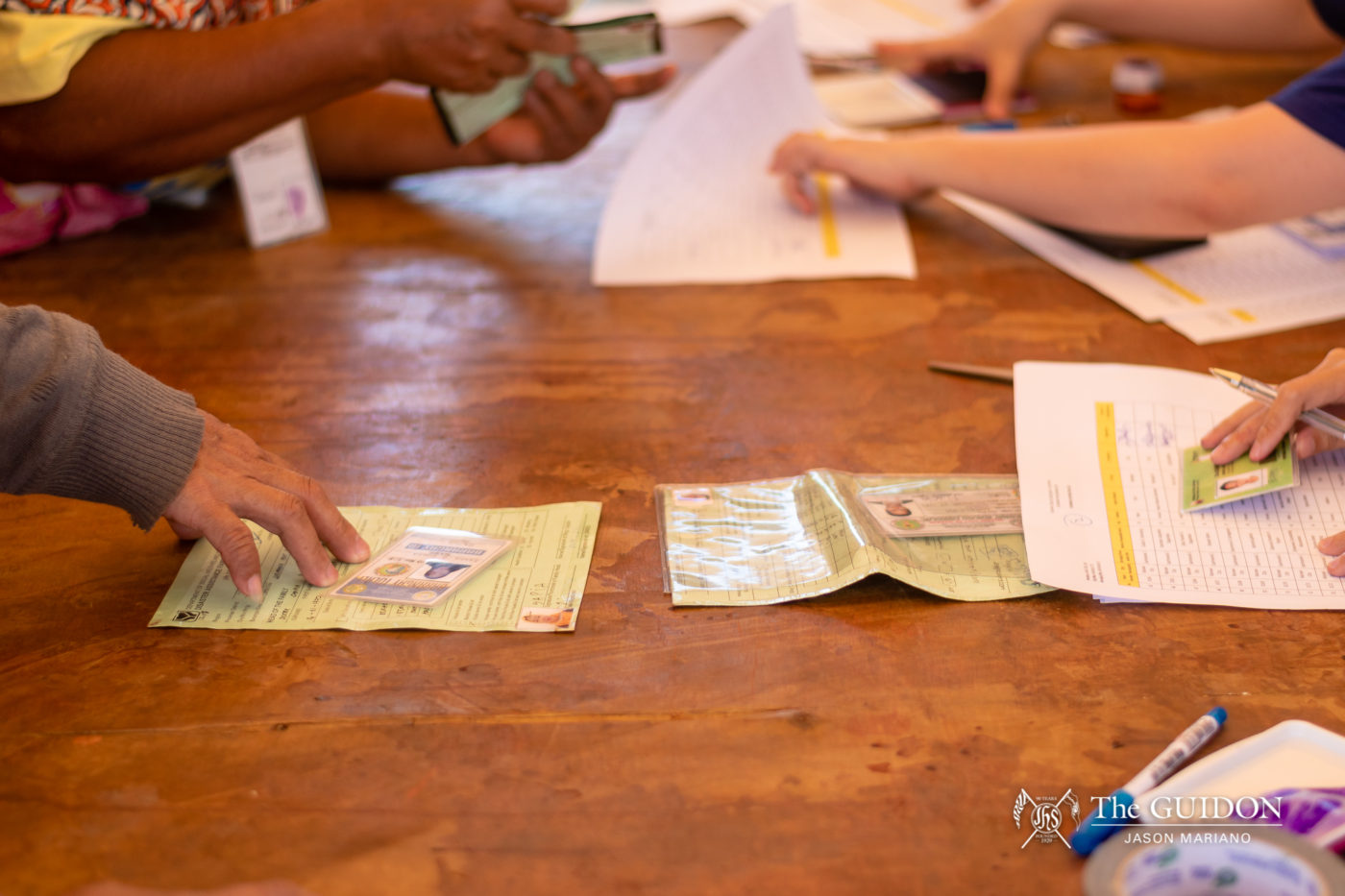
Recipients of the relief packages verify their personal information for identification purposes as they receive relief goods from an NGO.
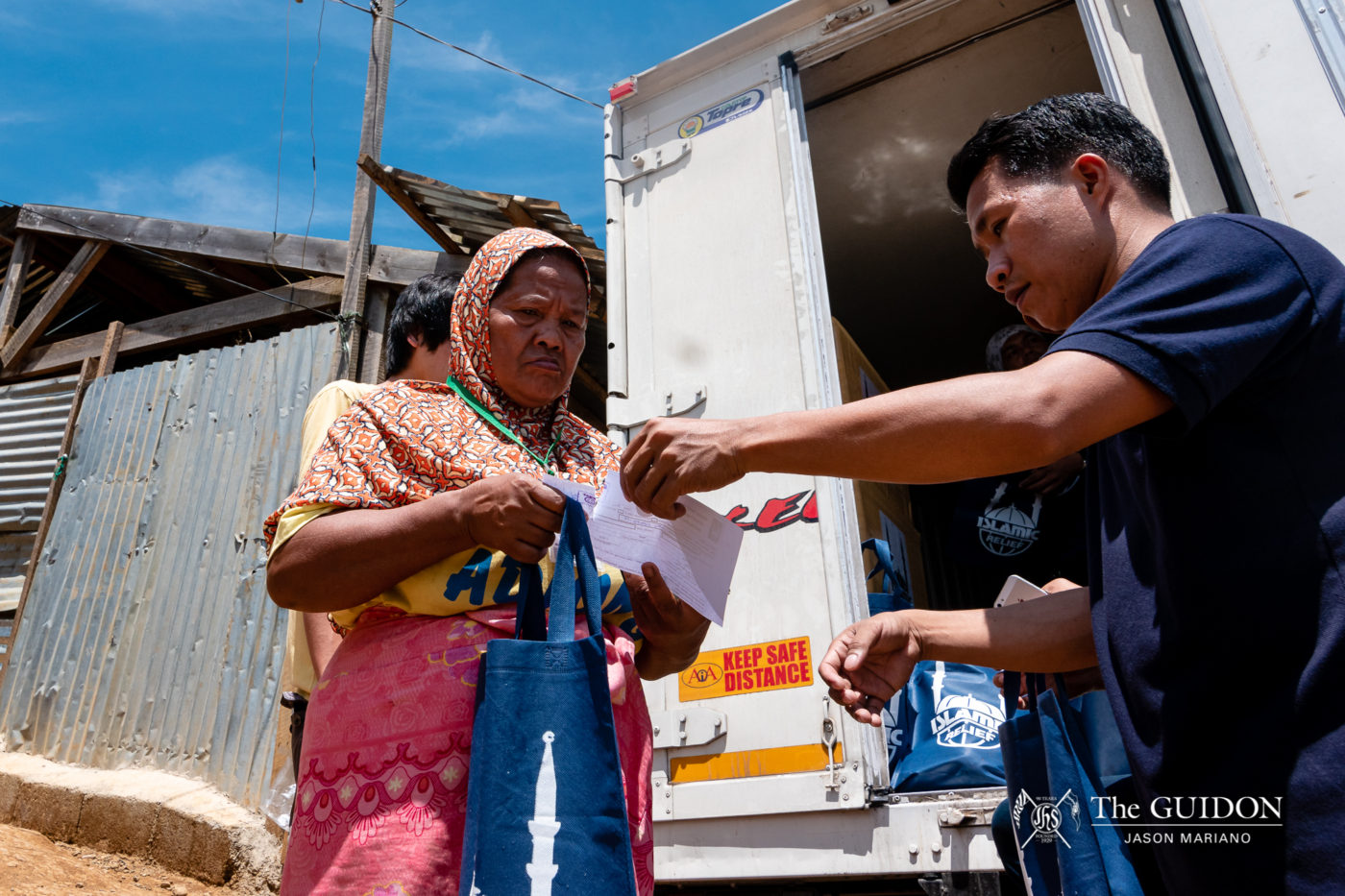
A Maranao woman receives a relief package from Islamic Relief Philippines. Most families, if not all, continue to rely on constant aid from NGOs to satisfy their basic day-to-day needs. These NGOs compensate for the insufficient supplies provided to the residents.
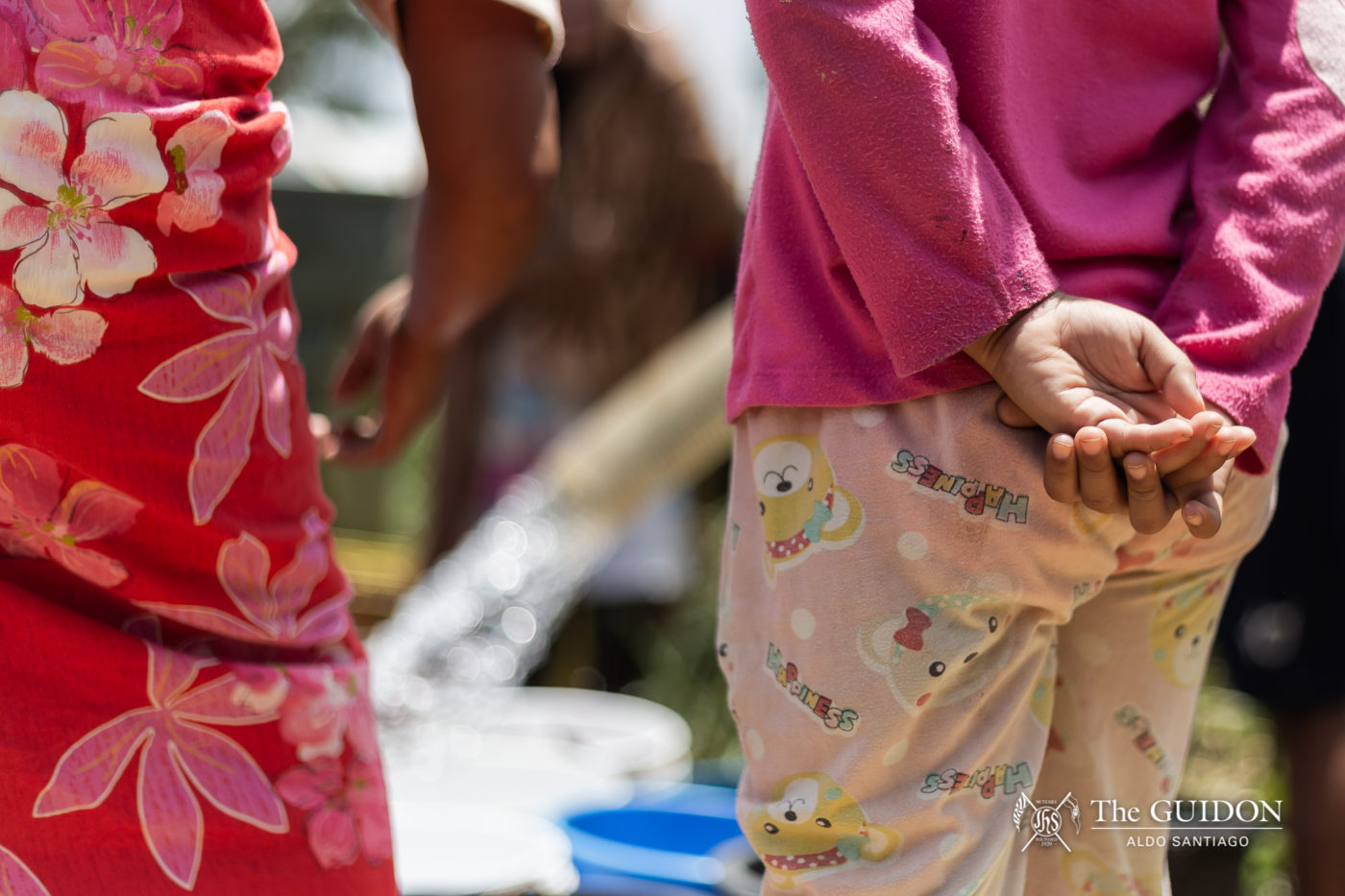
As the NGO relief operations continue, albeit rather intermittently, the Sarimanok Tent City Site 2 families patiently wait as people from Action Against Against Hunger fill up their water containers after days of not having water in their area.
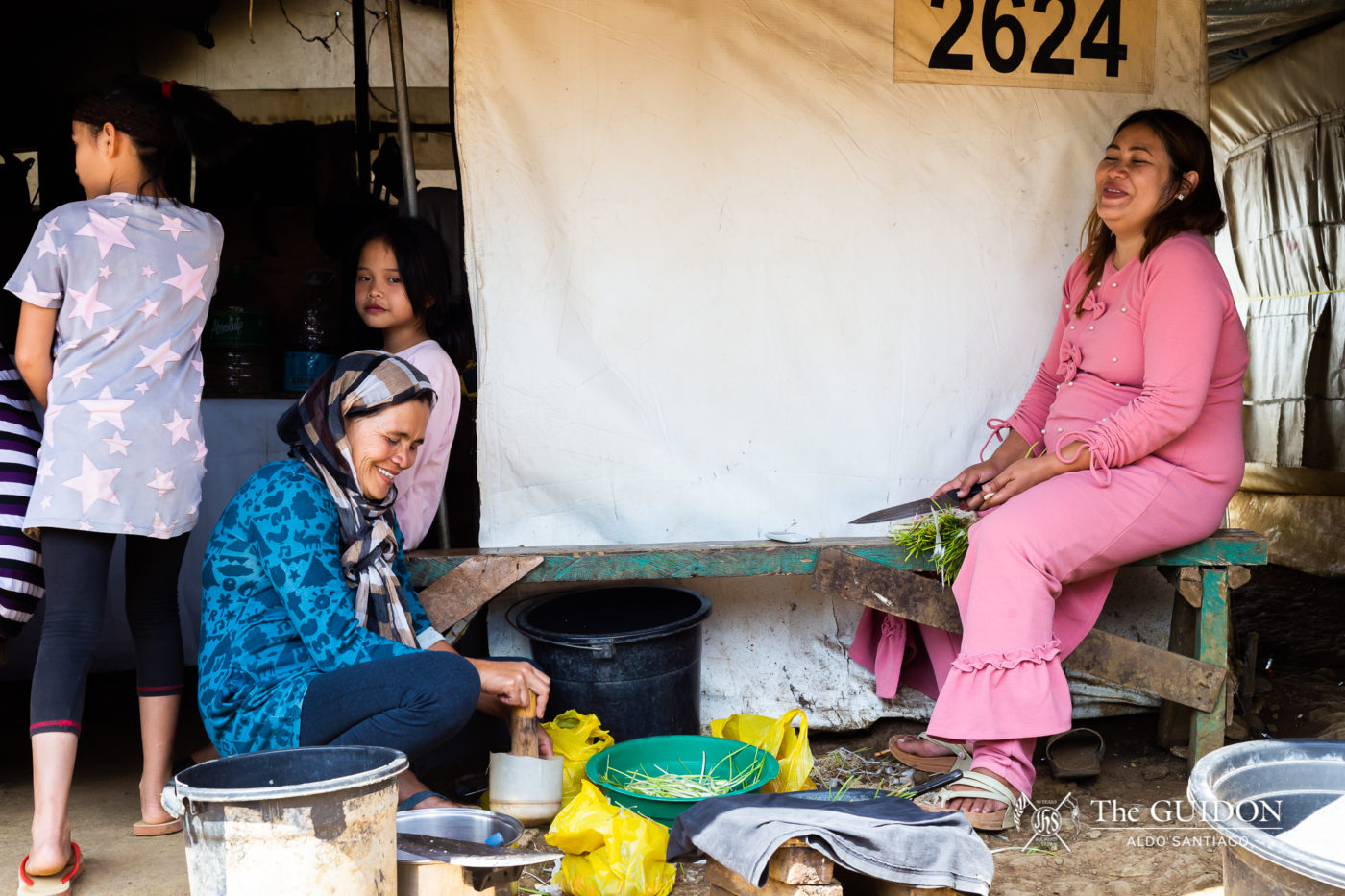
Families prepare meals in celebration of Eid al-Adha despite the seeming stagnation of the rehabilitation process. The celebration highlighted the lighter side of the locals’ lives, which contrasts the increasingly negative and arms-centric narratives about the residents of Marawi.
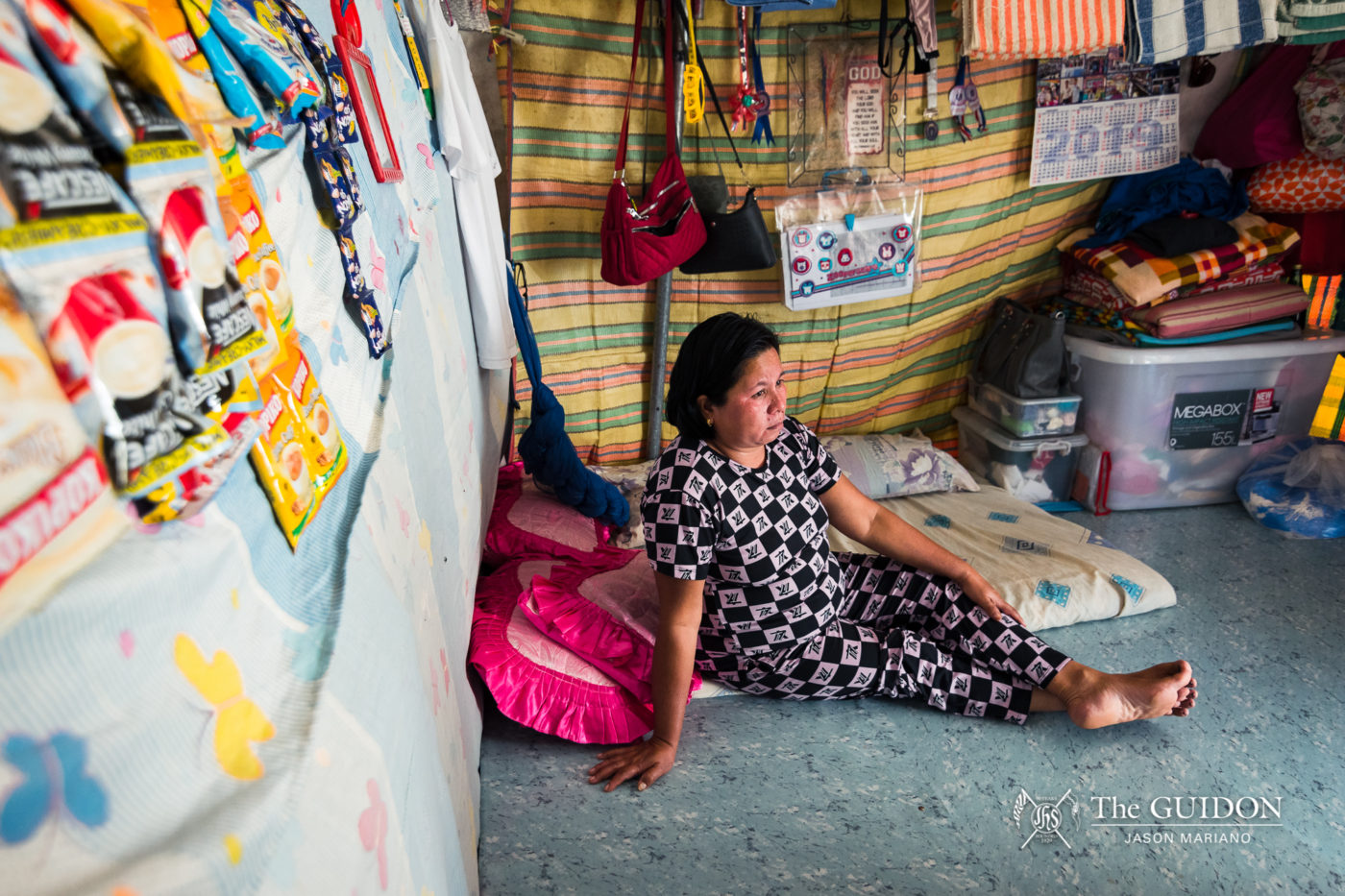
Amidst the Eid al-Adha celebrations, refugee Rosanna Jayme shares her experiences on how she was able to escape the war zone and explains the sense of unity between Christians and Muslims in a predominantly Islamic region. Despite not having the same beliefs, her Muslim neighbors still welcome her with open arms and invite her to participate in their religous festivities.
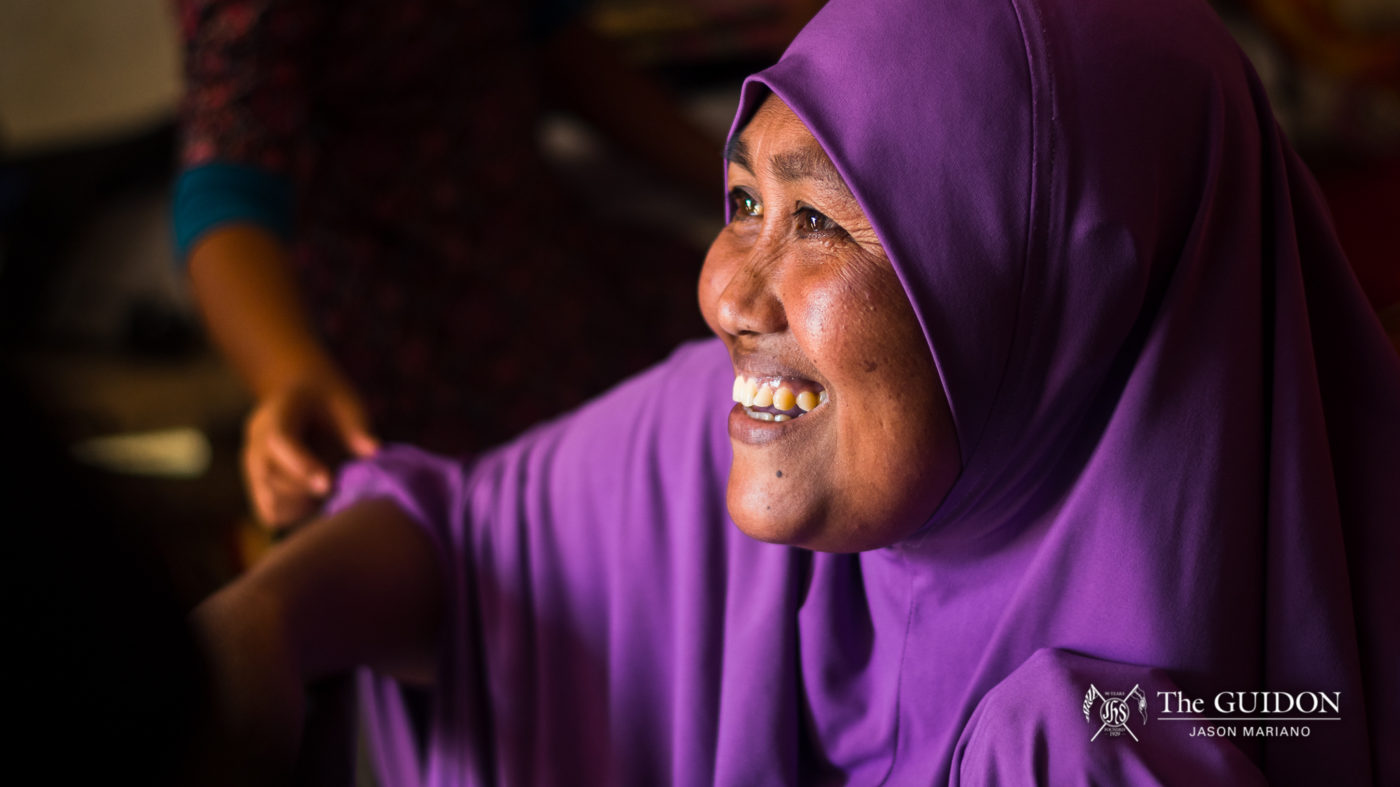
In another tent, a Maranao refugee recounts how fortunate she was to have escaped just before the attackers came to her area. She is grateful to Allah because her children survived the ordeal and are still safe in her arms today.
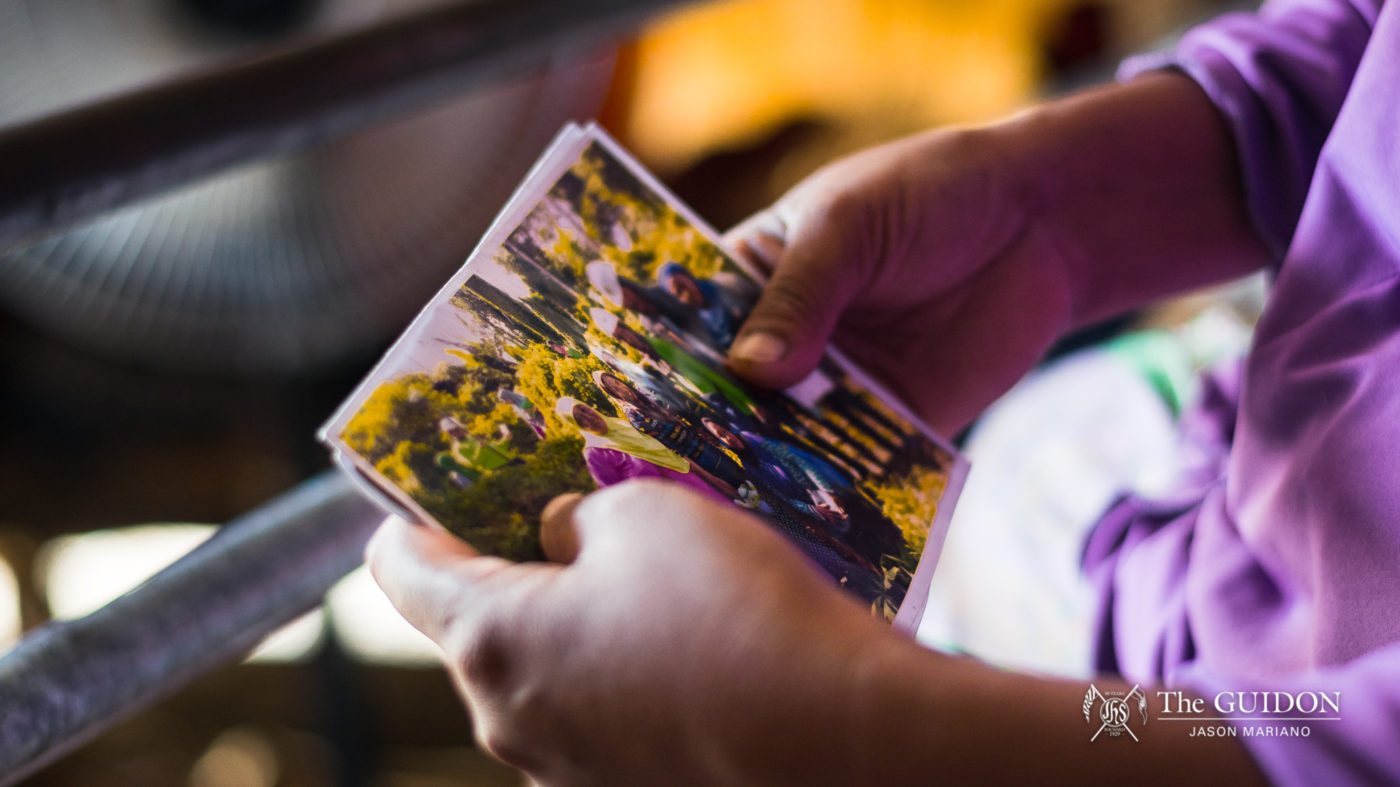
She also talks about the time she was finally allowed to visit the remains of her home inside the Most Affected Area (MAA) after months of being restricted from the zone. Many locals continue to find themselves longing to return to their properties and start anew.
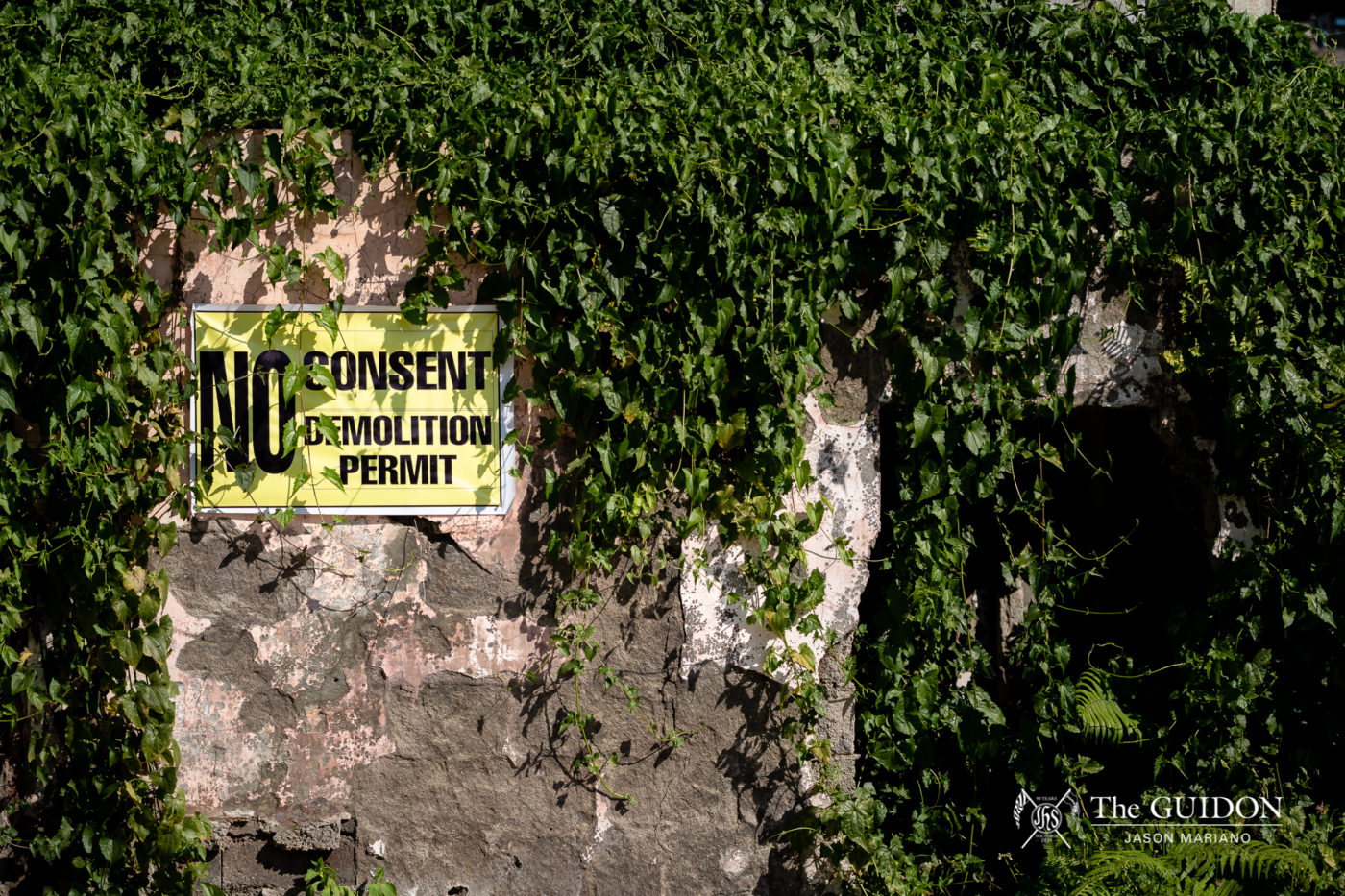
Many of the structures in Ground Zero have been overrun by plant growth due to prolonged abandonment. Contractors have been prohibited from demolishing properties without the consent of the original owners. The Maranaos have complained about the slow progress of the government’s rehabilitation program and the lack of clear, thoughtful coordination with the locals.
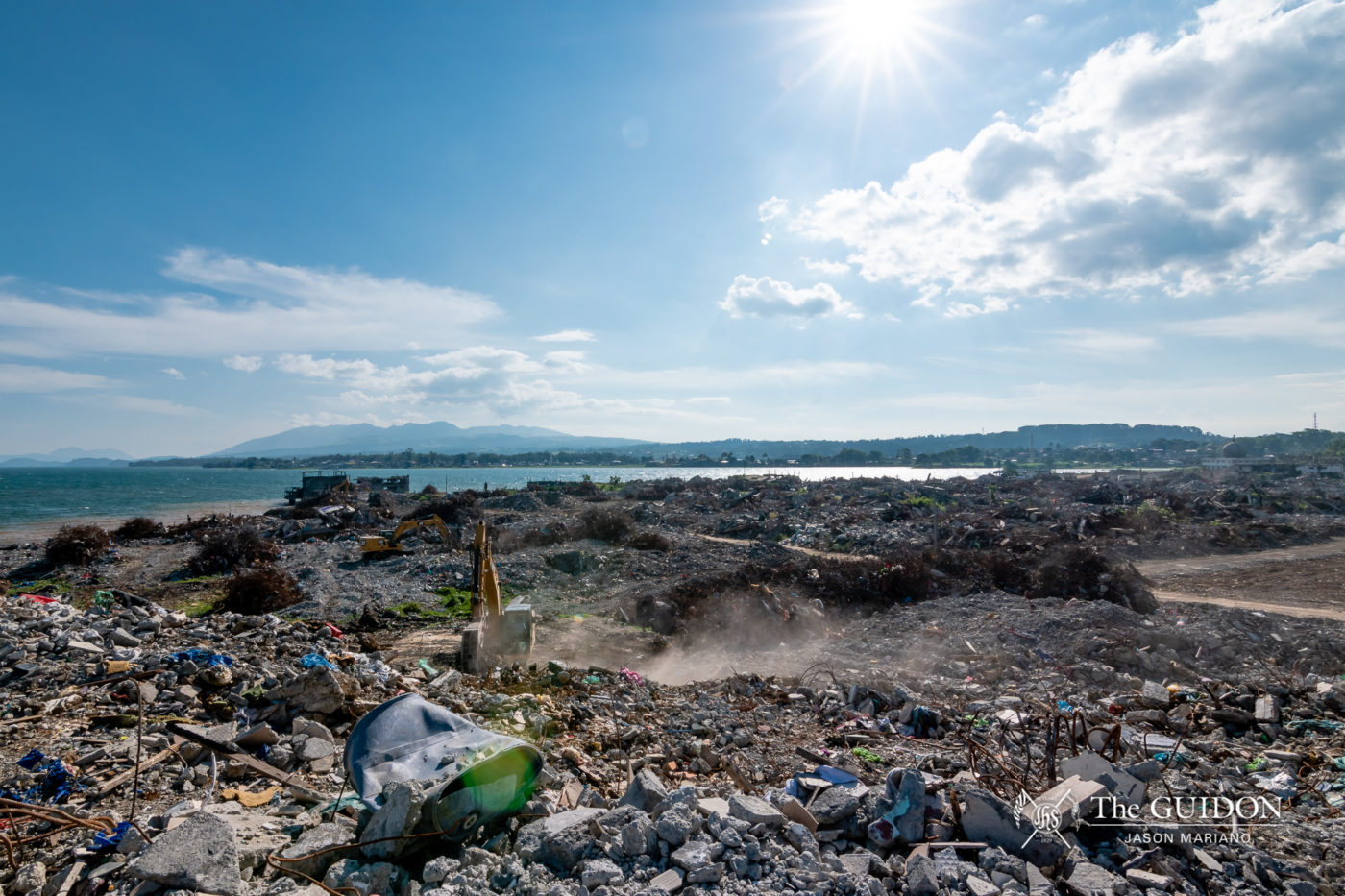
Much of the area surrounding Lake Lanao in Ground Zero has been brought down by the ongoing demolitions initiated by Task Force Bangon Marawi (TFBM) as part of the so-called rehabilitation program and rebuilding efforts for the besieged Marawi City.
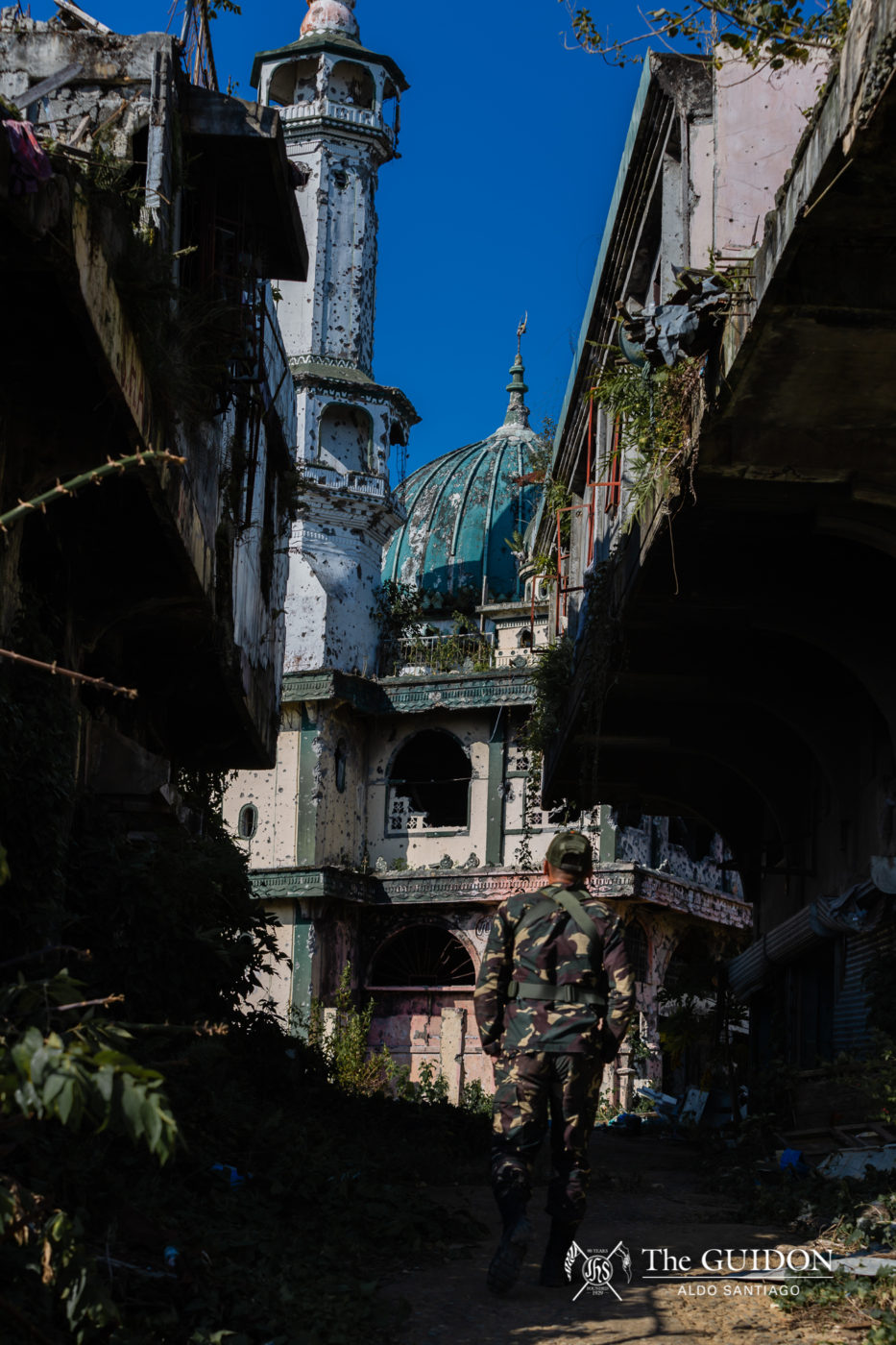
A number of military soldiers have guarded the city center since the start of the siege in 2017. Some wish to finally return to their families after more than two years of service.
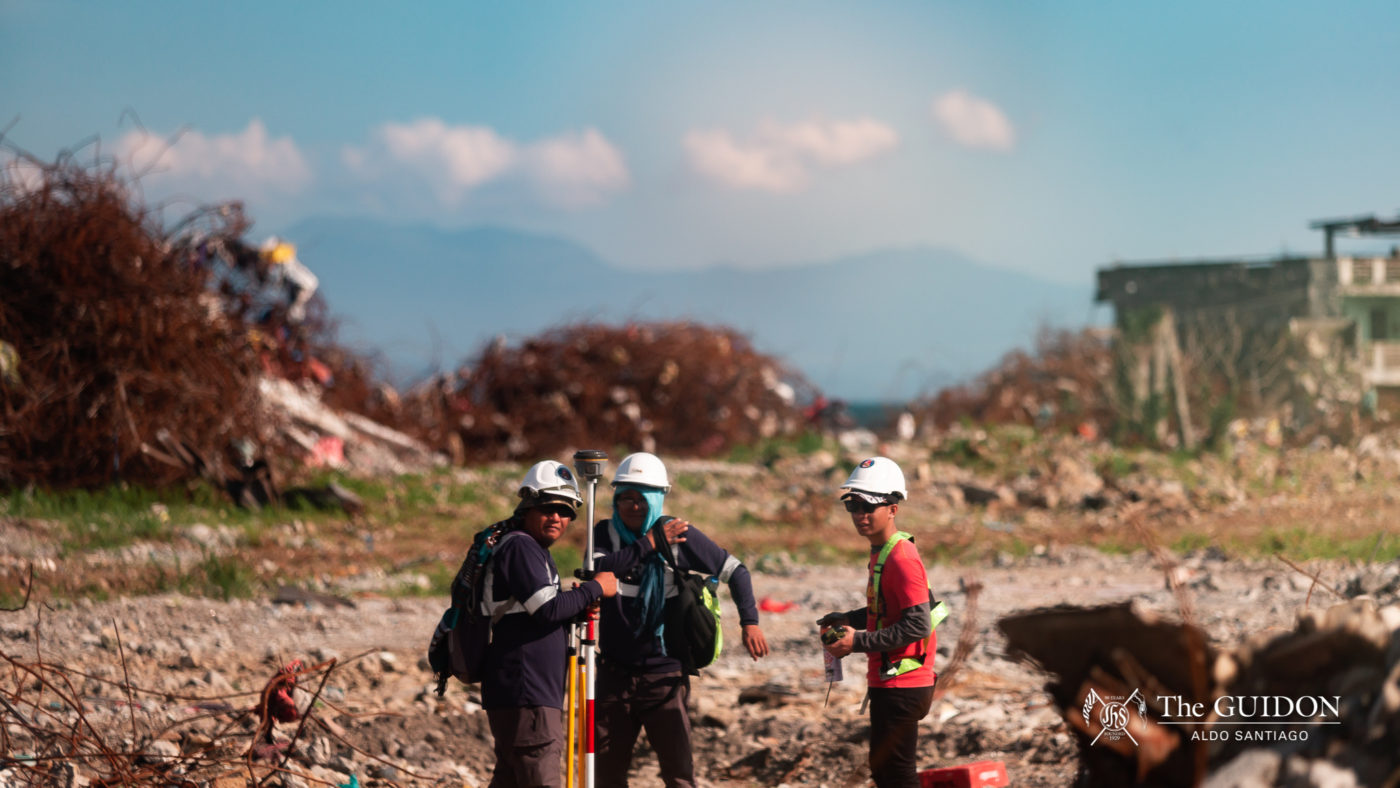
Workers continue to survey the area to assess any hazards that may disrupt the demolition operations in the MAA.
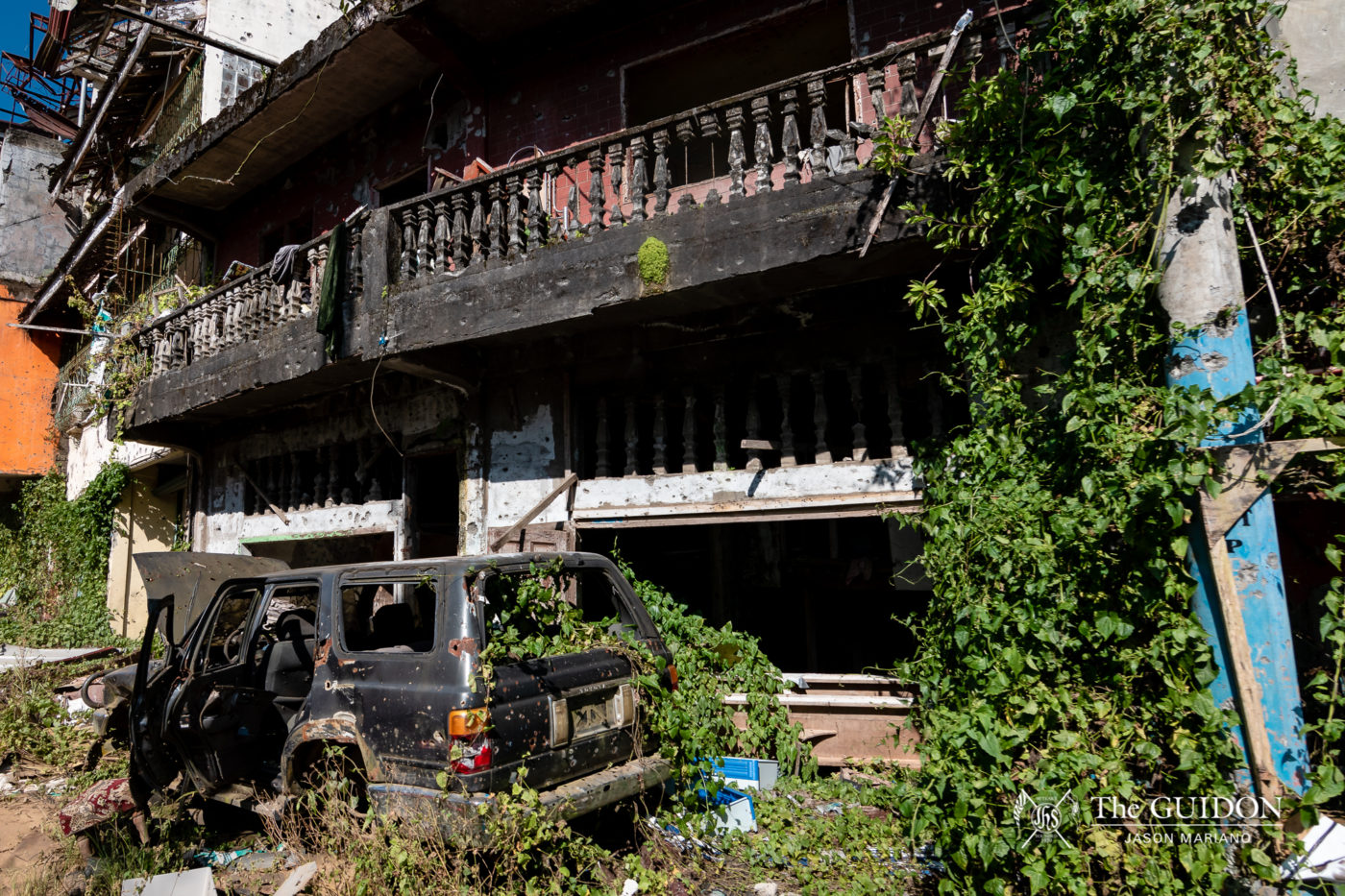
At the height of the armed conflict, the Maranaos were forced to hastily flee the area for safety, thereby leaving behind many of their personal belongings such as everyday supplies, family heirlooms, and private documents needed for their identification.
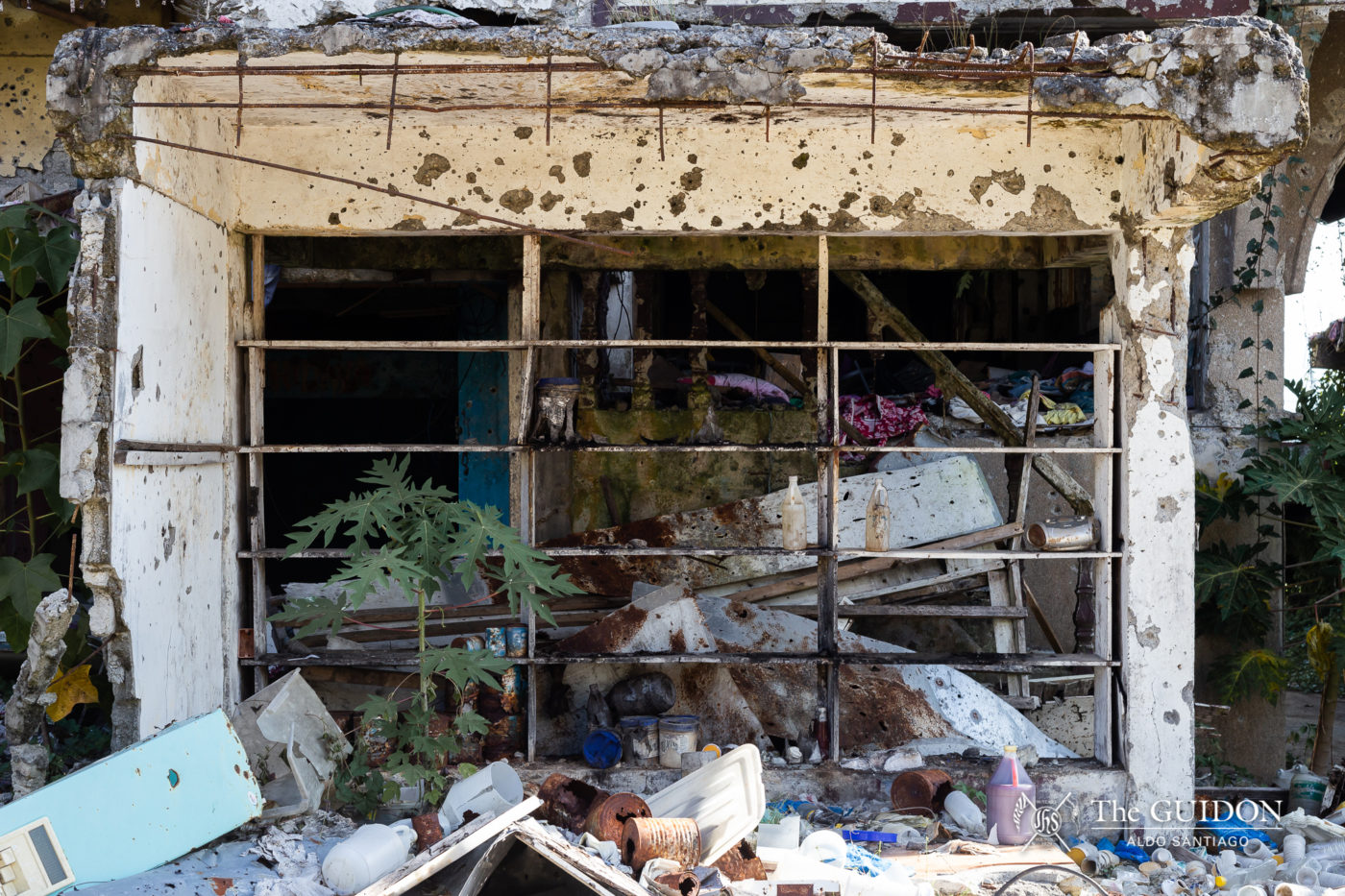
Open walls and damaged properties are a common sight in the MAA. The prolonged stagnation and degradation of the former residents’ homes are apparent in the scenes of devastation.
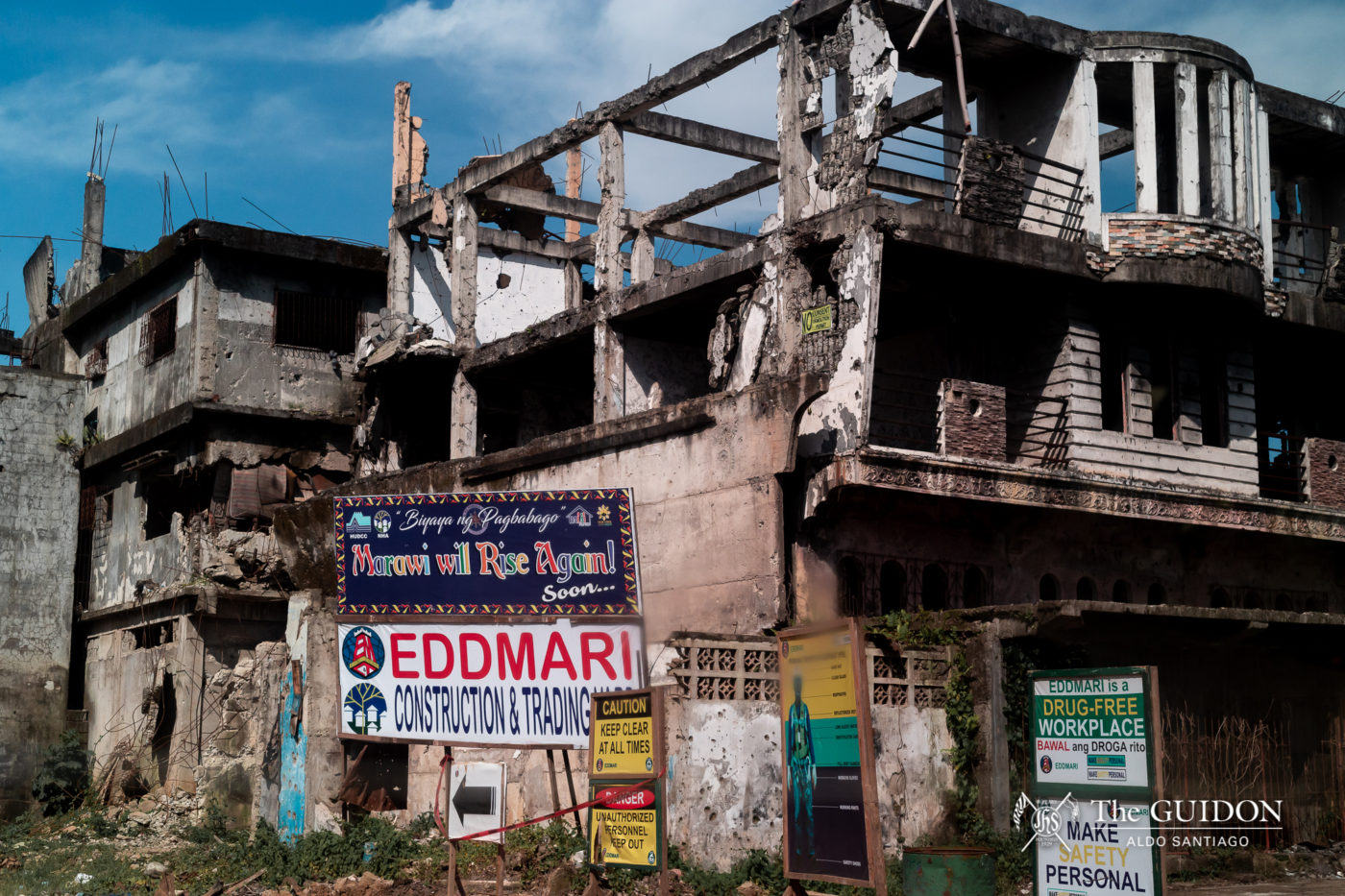
Many IDPs criticize the prolonged demolition operations as a result of their desire to return to their ancestral homes. Some families are willing to handle the costs of rebuilding their houses in order to fast track the rehabilitation of their property.
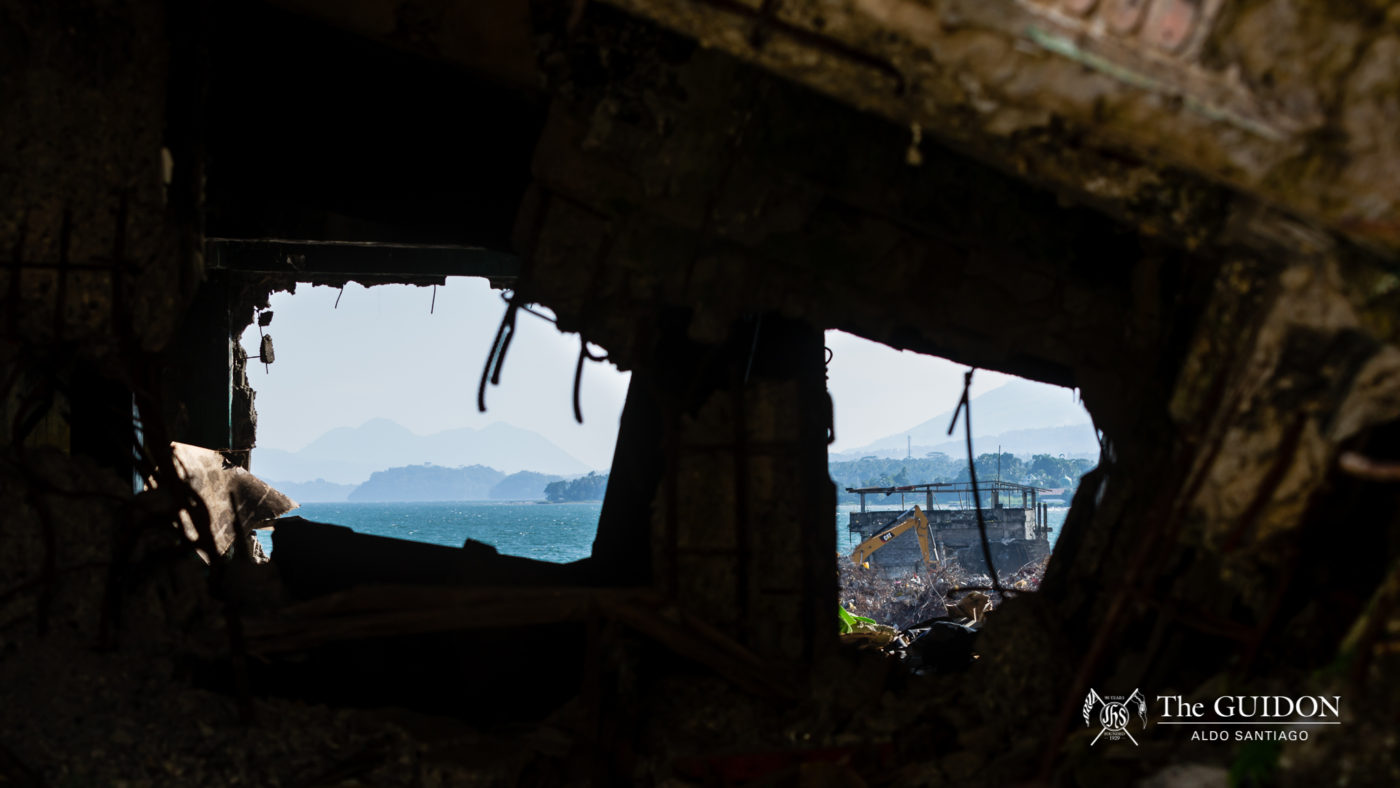
A peek from the windows of a fallen building overlook the scenic view of Lake Lanao and demolition operations on the bay area.
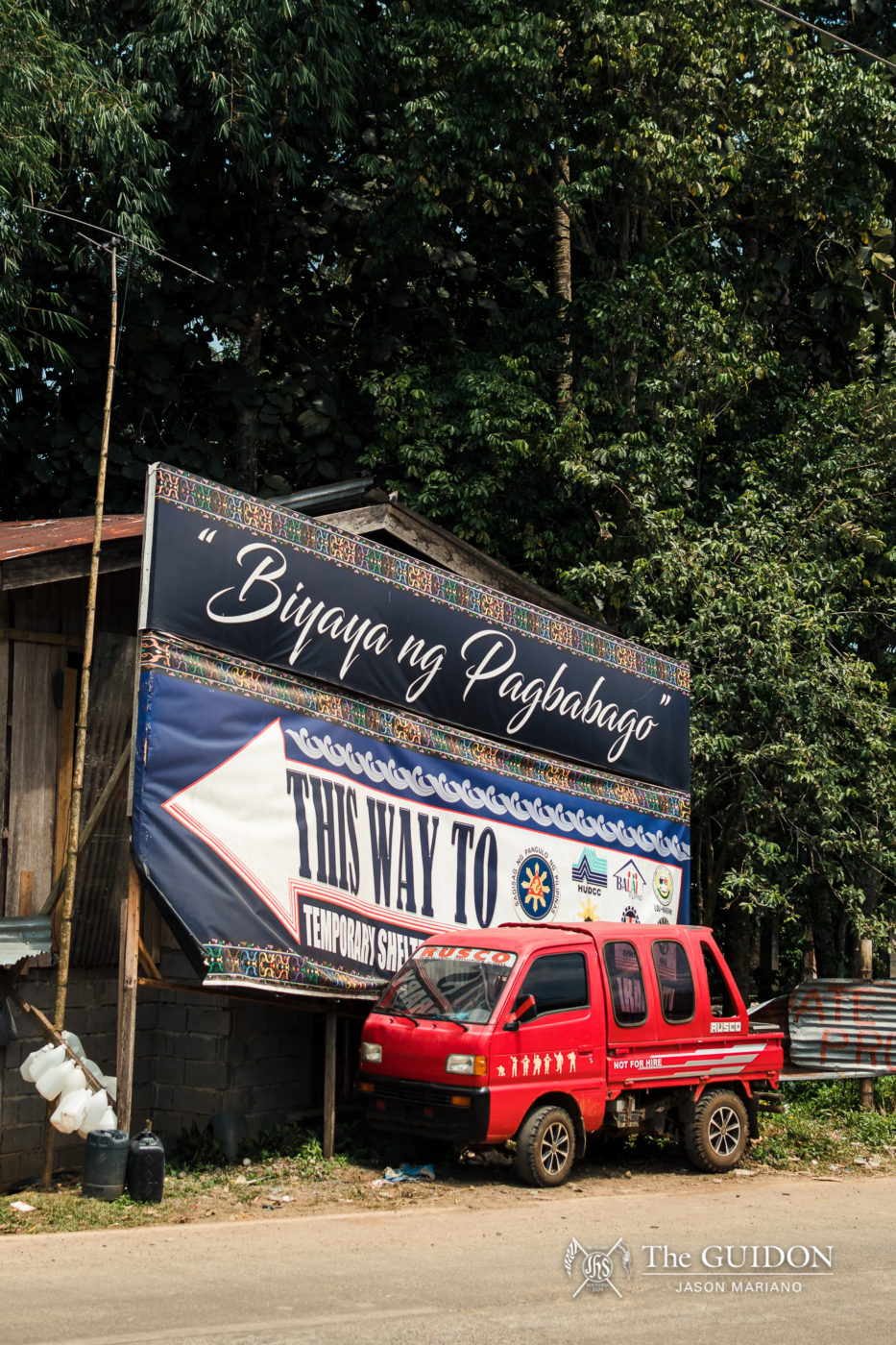
Along Amai Pakpak Avenue, the road on the outskirts of Marawi City, a tarpaulin reads “Biyaya ng Pagbabago.” This is one of many signages around the area. Other tarpaulins share the details of the rehabilitation program—locals surmise that government agencies, especially the TFBM, set up these signages to raise morale among those who have been displaced.
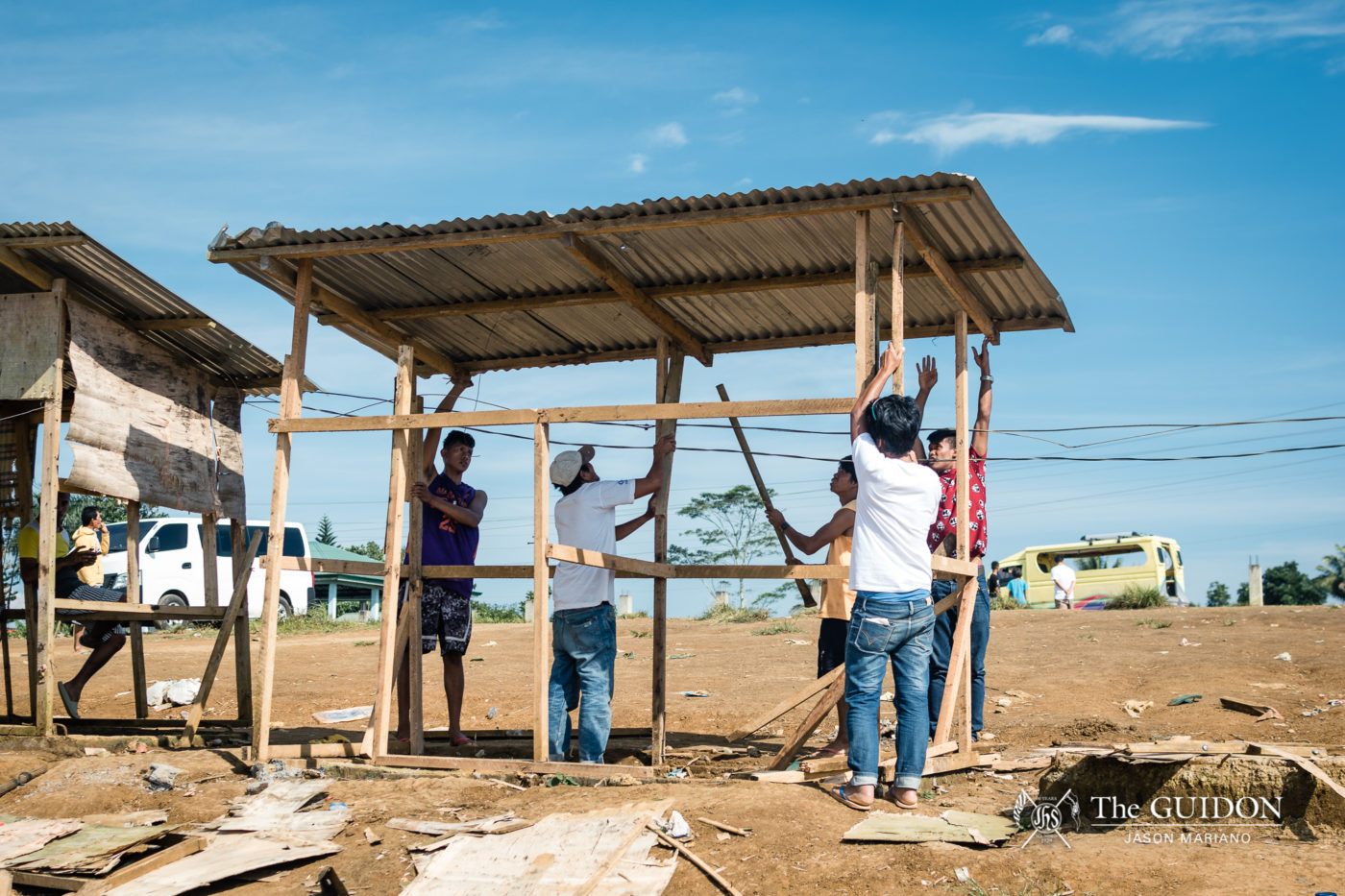
Residents from Sarimanok Tent City Site 2 work together to build makeshift structures around the camp. According to the residents, relief aid has been inconsistent and they are left to work with what’s available to them in order to survive.
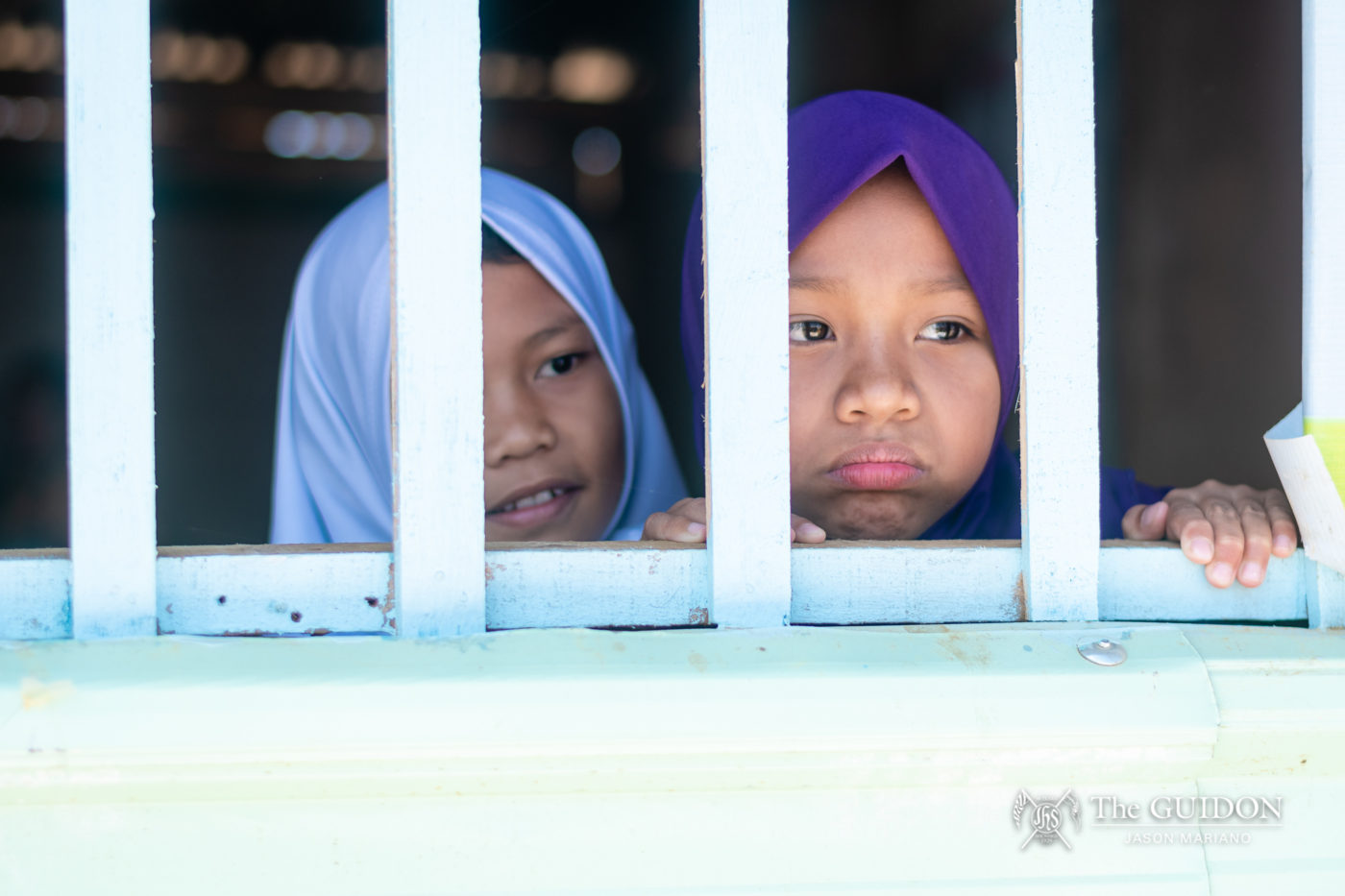
Similar to many of the Maranao youth, Rose* dreams of being a math teacher one day to give back to the community by teaching them how to establish businesses of their own. She is inspired by her mother Rosanna who owns a sari-sari store.
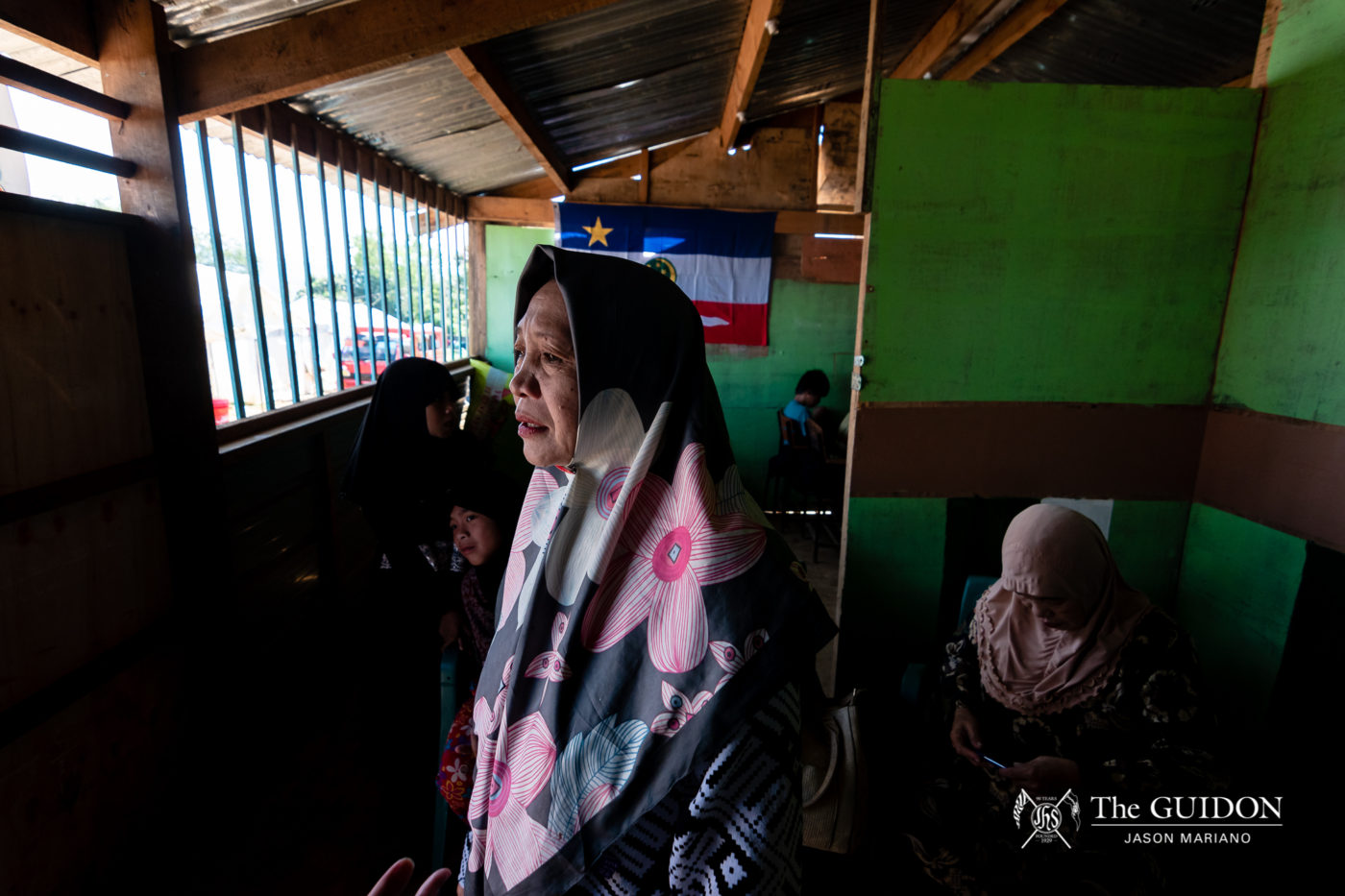
Marawi Sarimanok Elementary Pilot School principal for grade levels 4-6 Linda Adiong Selic shared her concerns regarding the lack of consistent aid for sufficient school facilities and materials. “The initial objective of the DepEd [Department of Education] program is to educate all people, especially [those] who are illiterate people. It means to say to eradicate illiteracy,” said the principal.
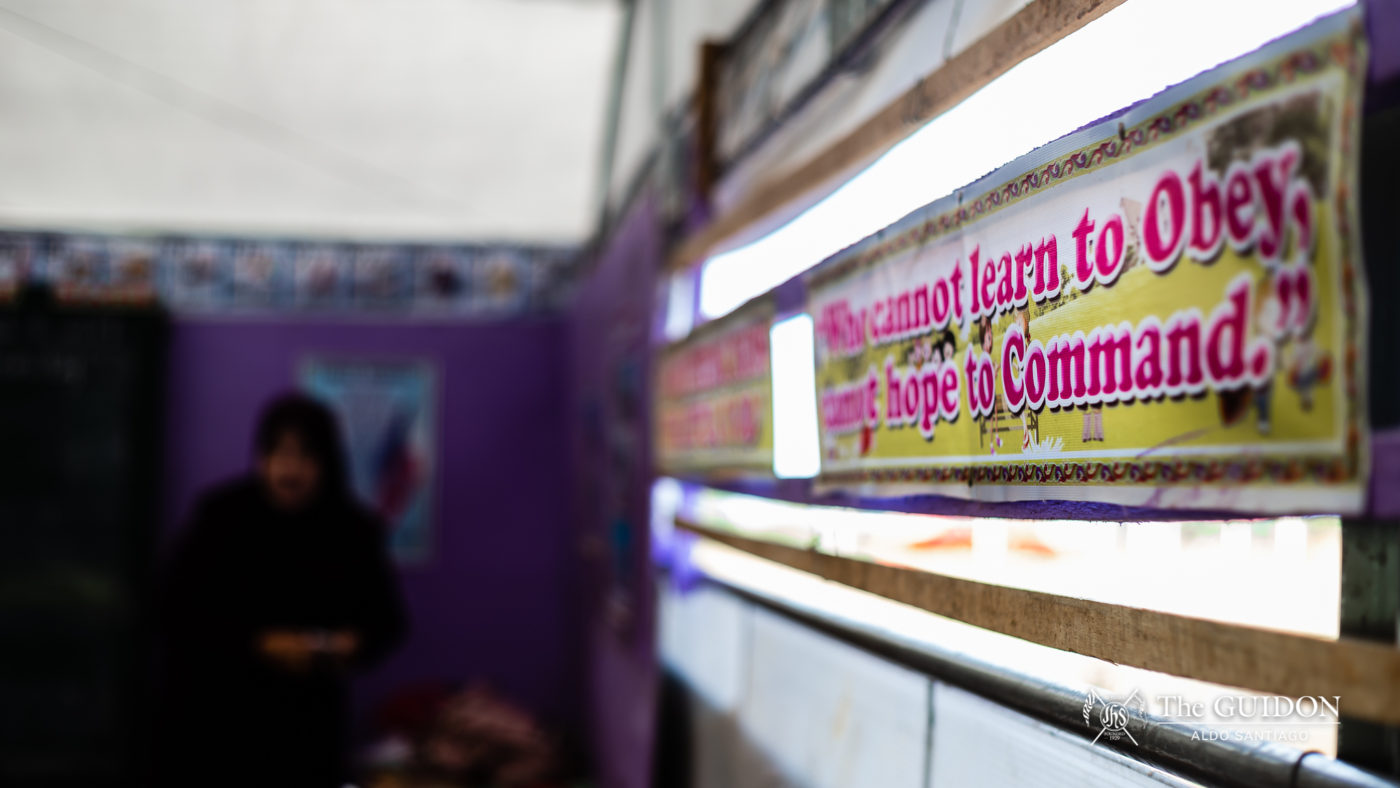
The temporary schools setup by local teachers persist to reestablish the education system of Marawi years after the siege.
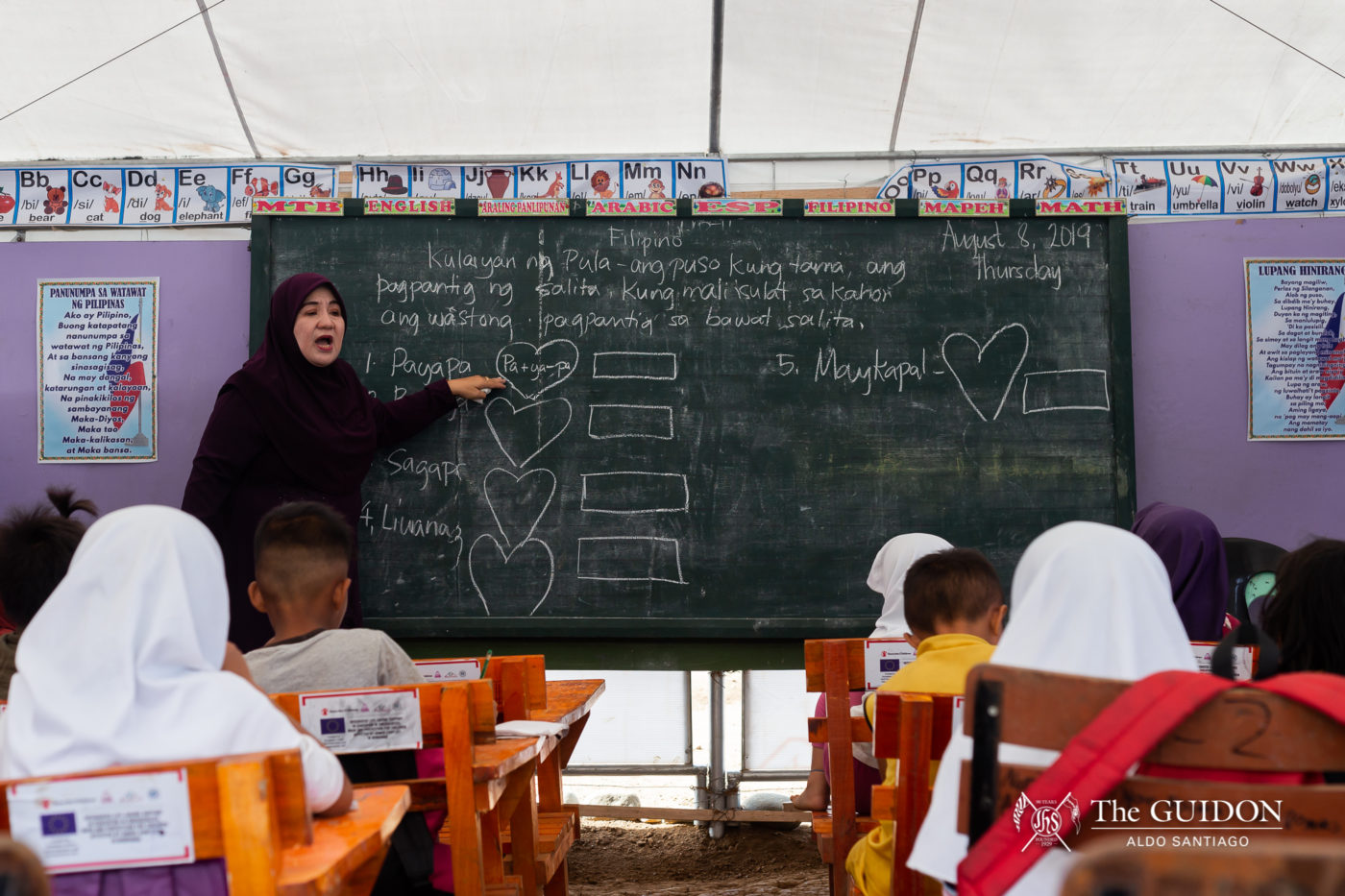
Community leaders created a teaching system combining teachers from different schools who taught in the MAA to provide education in temporary classrooms in resettlement areas. Students are grouped according to their age and previously attained grade level.
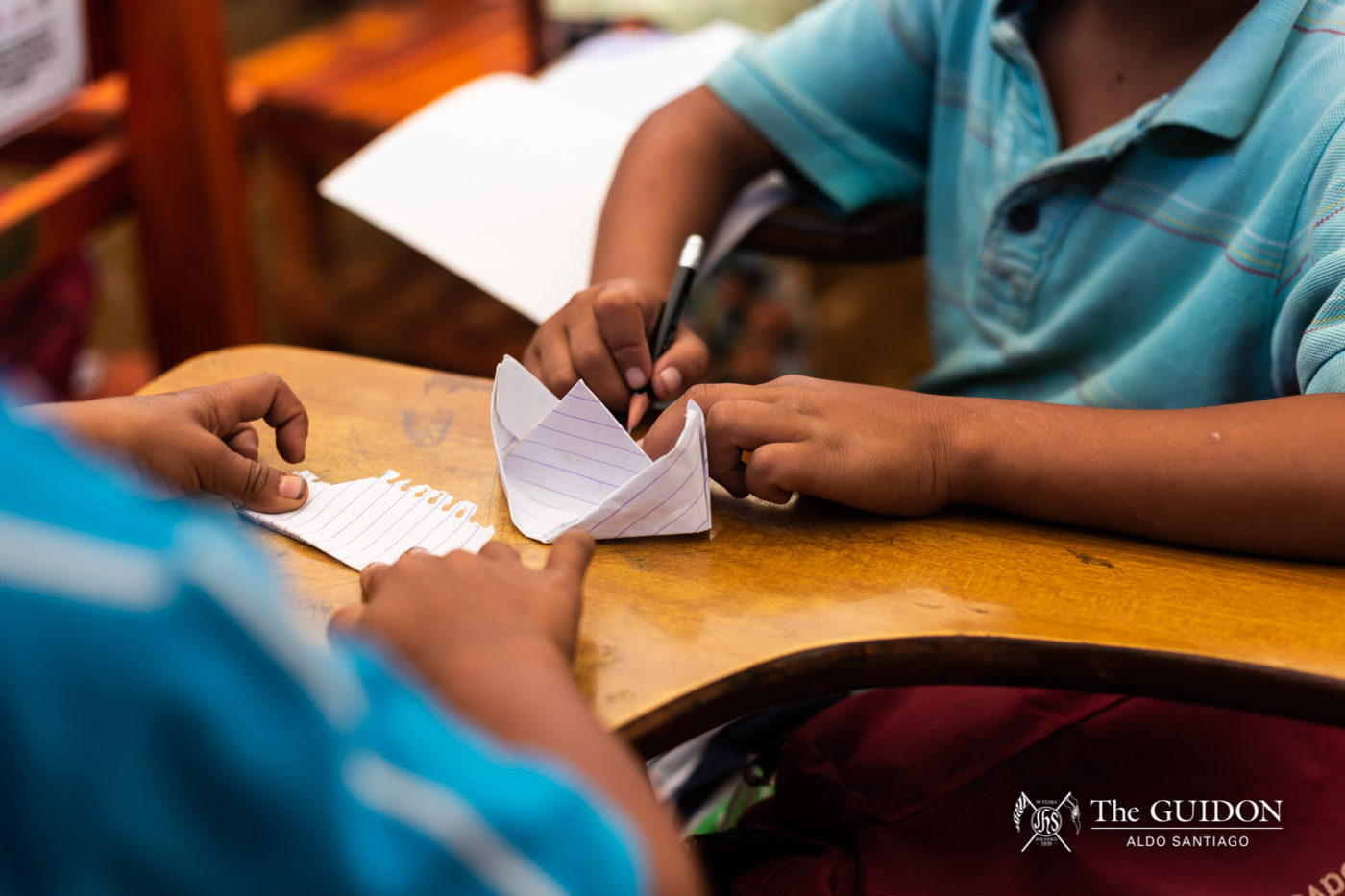
Makeshift classroom in different resettlement areas provide children an avenue to express their creativity and cultivate their learning with the help of the DepEd and volunteer teachers across Marawi City.
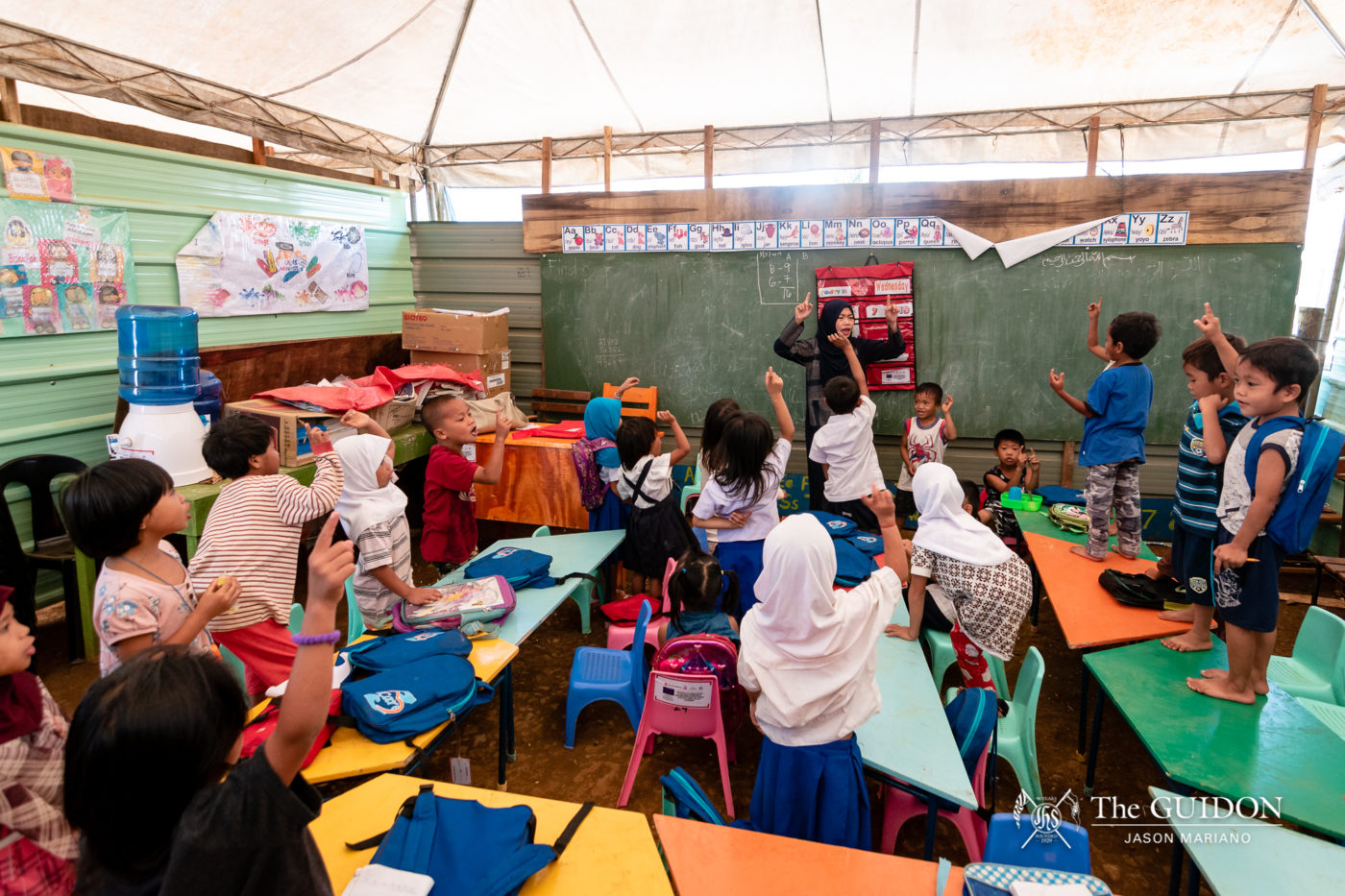
In spite of substandard facilities and materials, the teachers continue to push for a conducive learning environment in their day-to-day discussions. The teachers stand firm in their belief that a solid educational foundation for these young students will be vital in the long process of healing for the city.
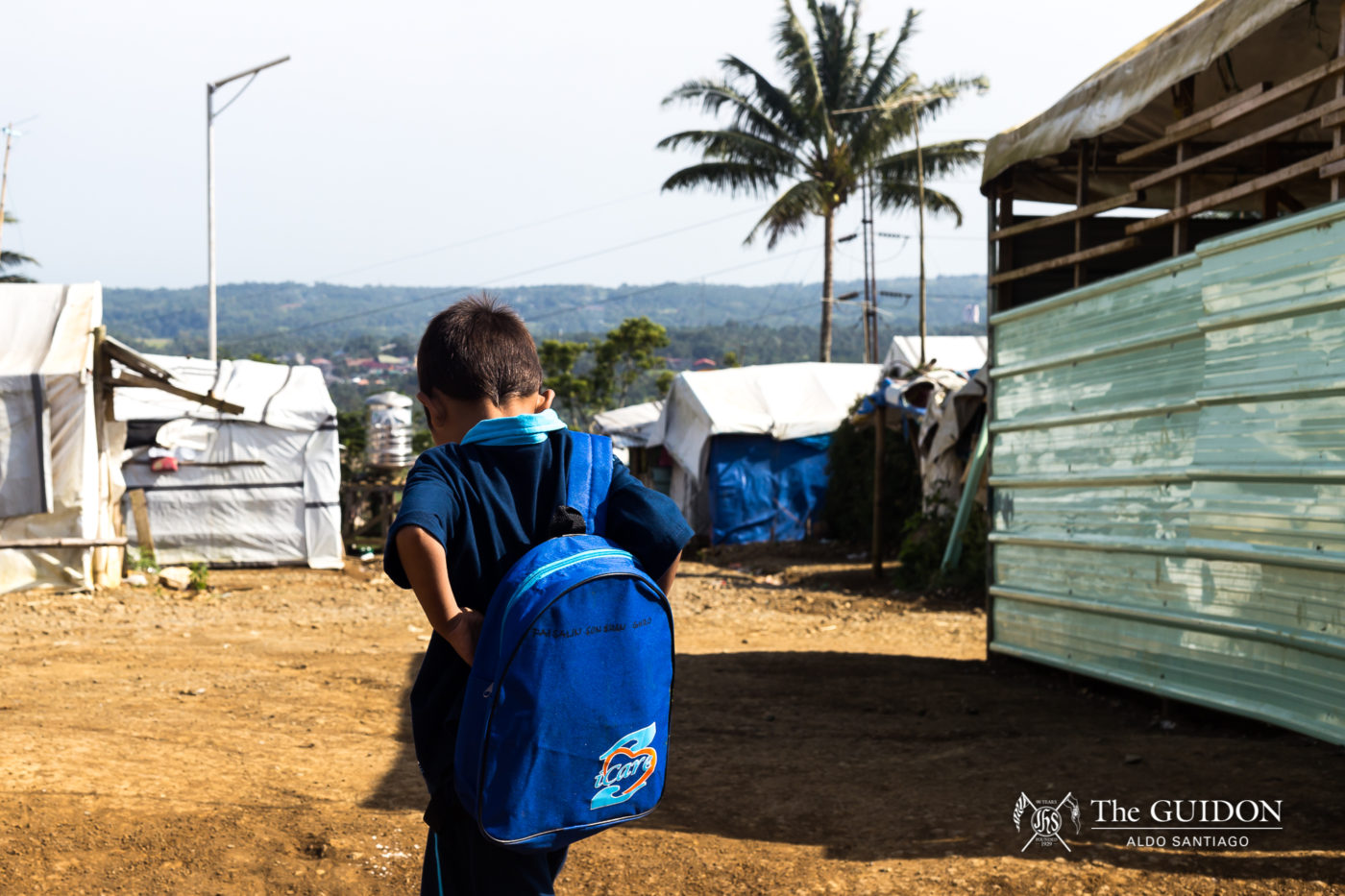
A student from the Marawi Sarimanok Elementary Pilot School prepares to go back to his family’s tent after a school day. He is among the latest batch of students who have waited years to resume their education.
After the armed conflict that displaced thousands of residents, the community’s foundations of faith, family, and culture were put to the test amidst the devastation at the heart of Marawi City. Despite enduring unimaginable experiences of war, insufficient relief efforts, and a lengthy rehabilitation process, the IDPs persist in their hope for the day they can finally return to their own homes in peace.
Photos by Jason Mariano and Aldo Santiago




